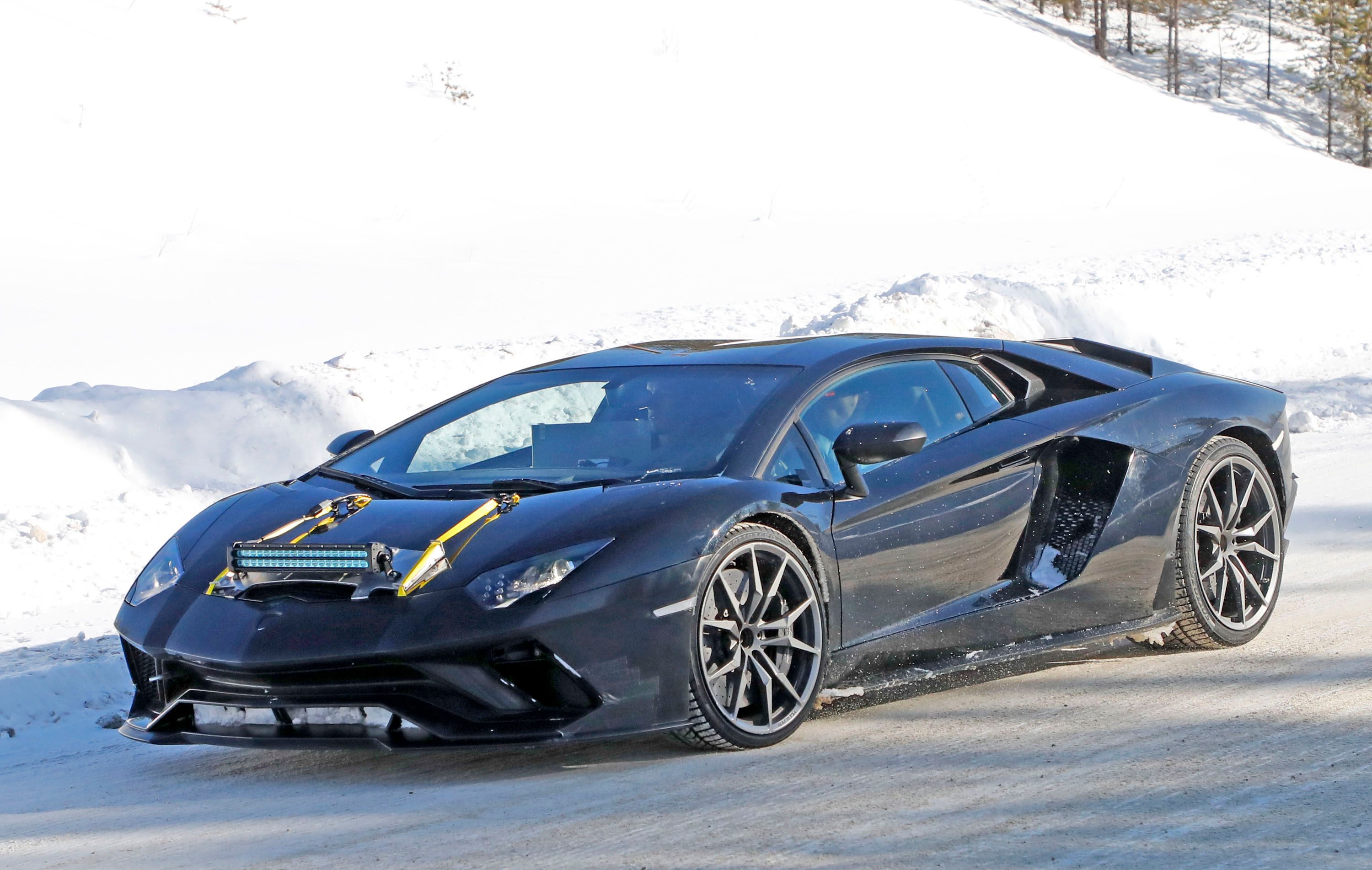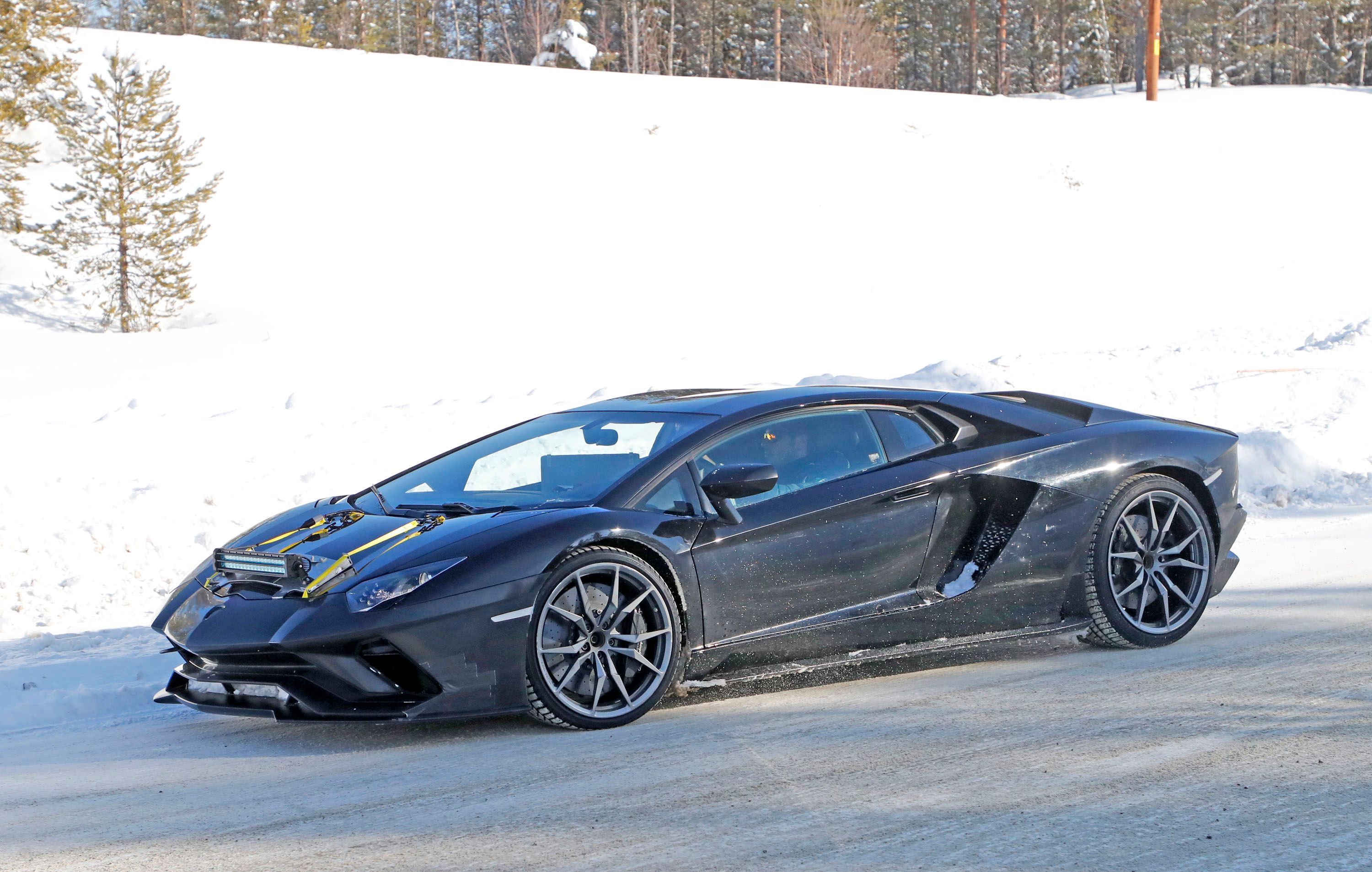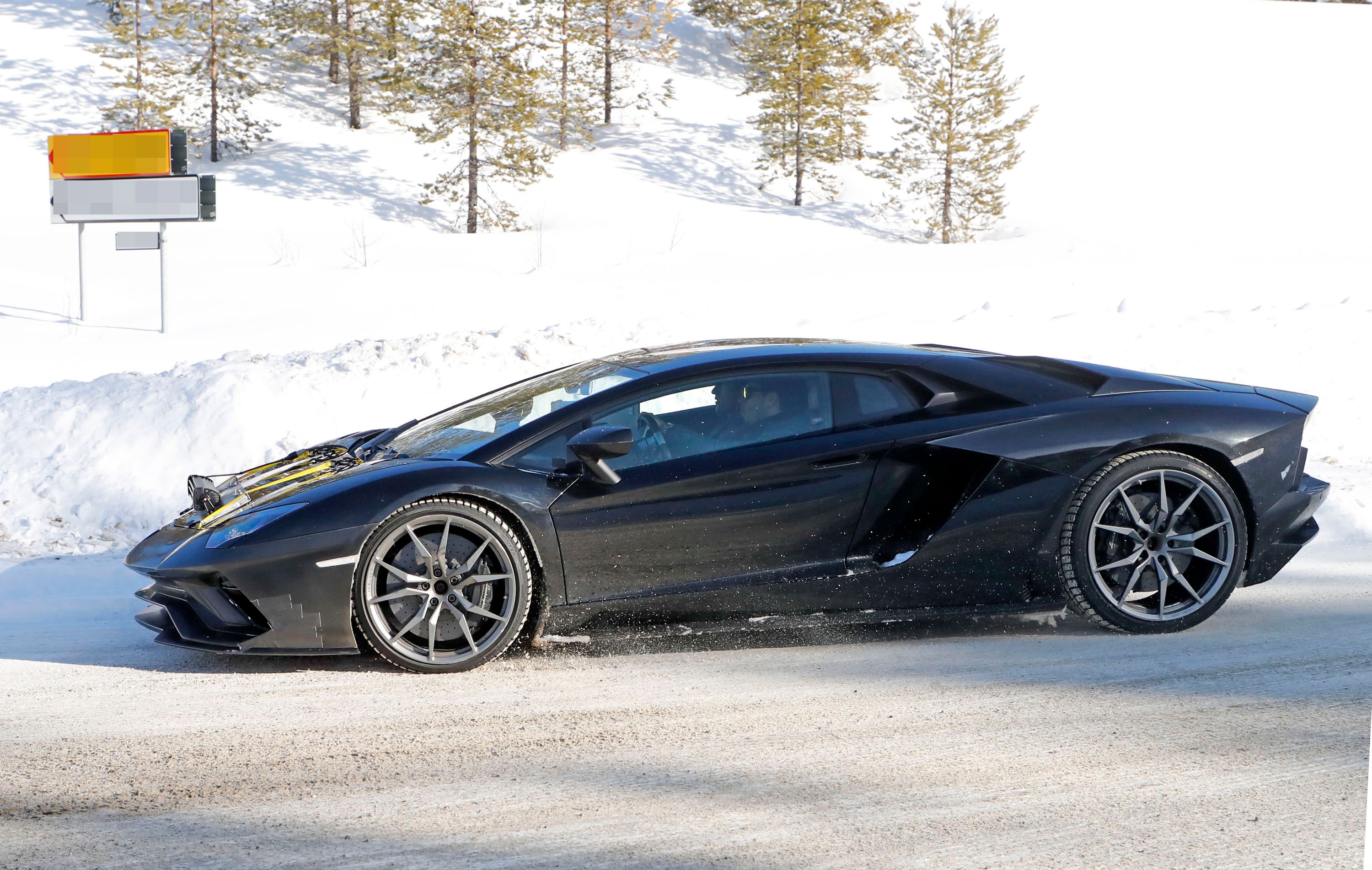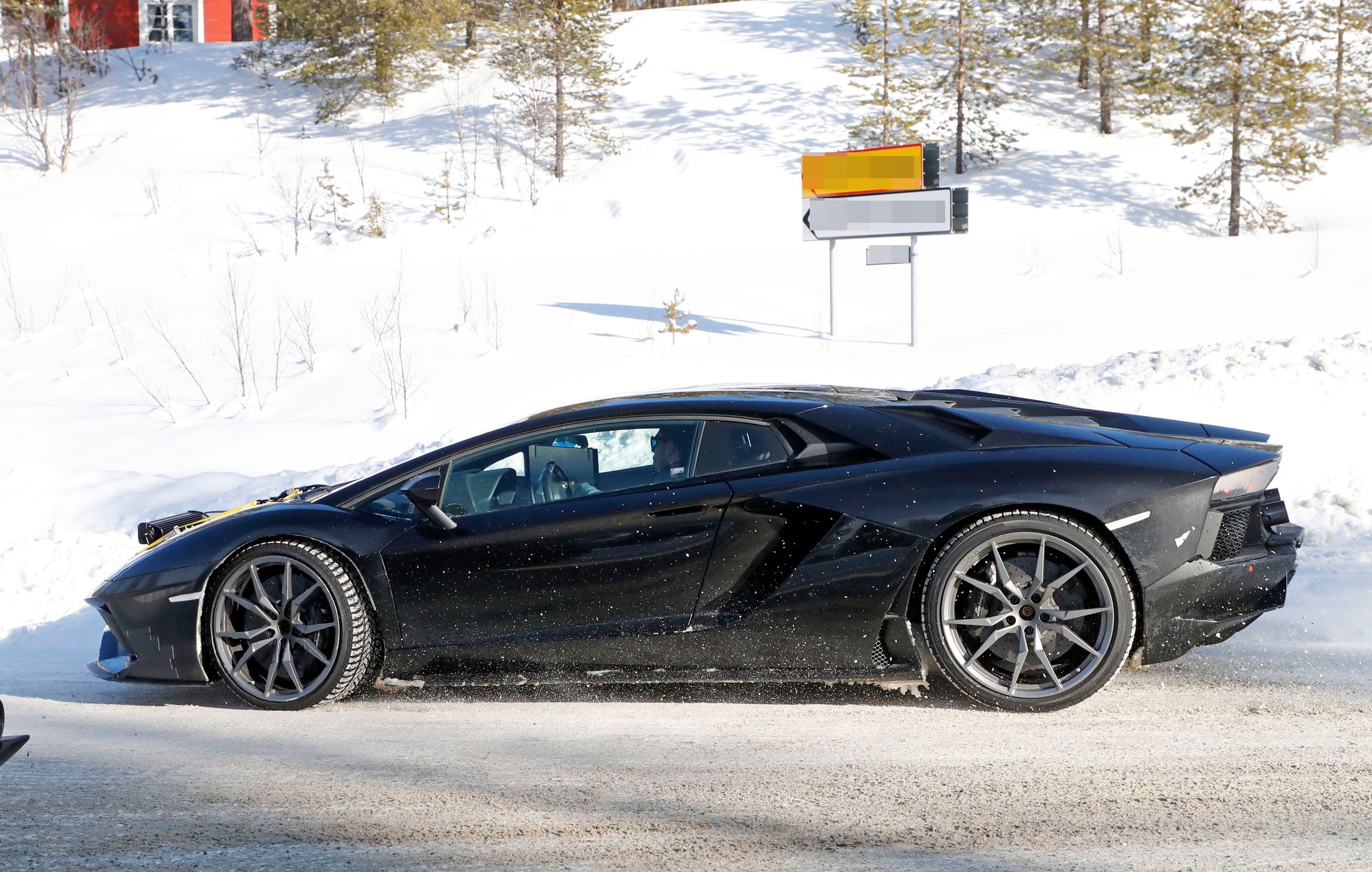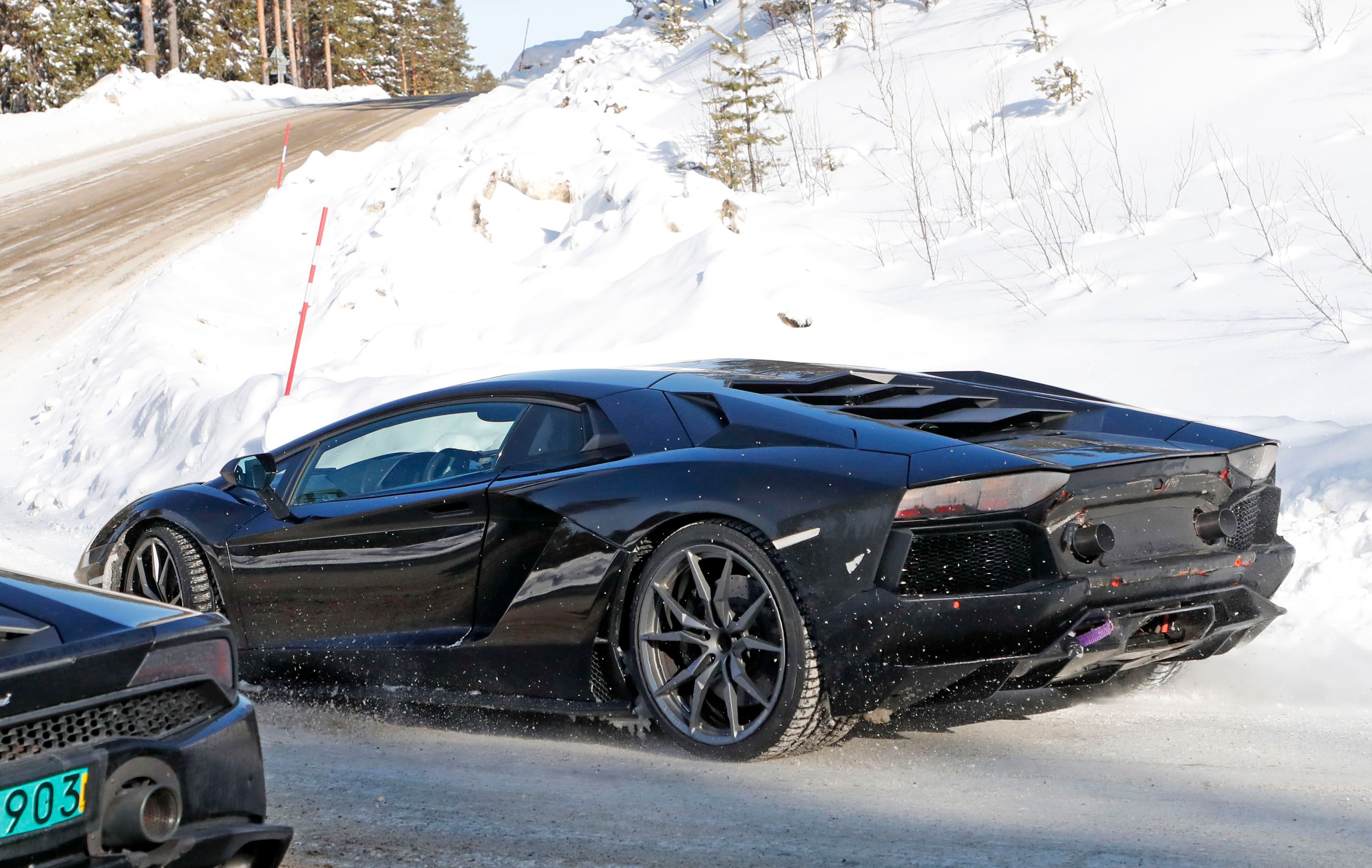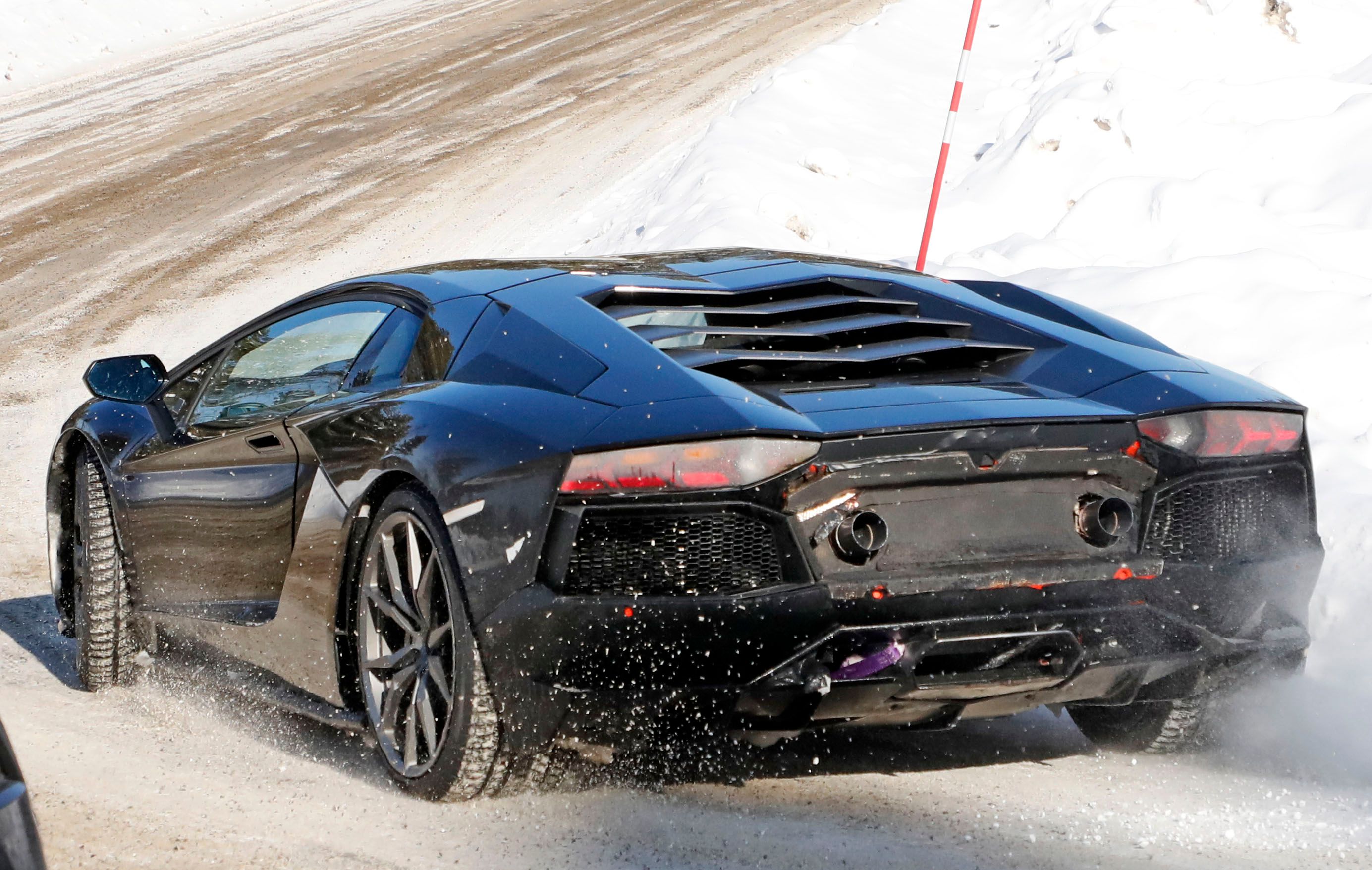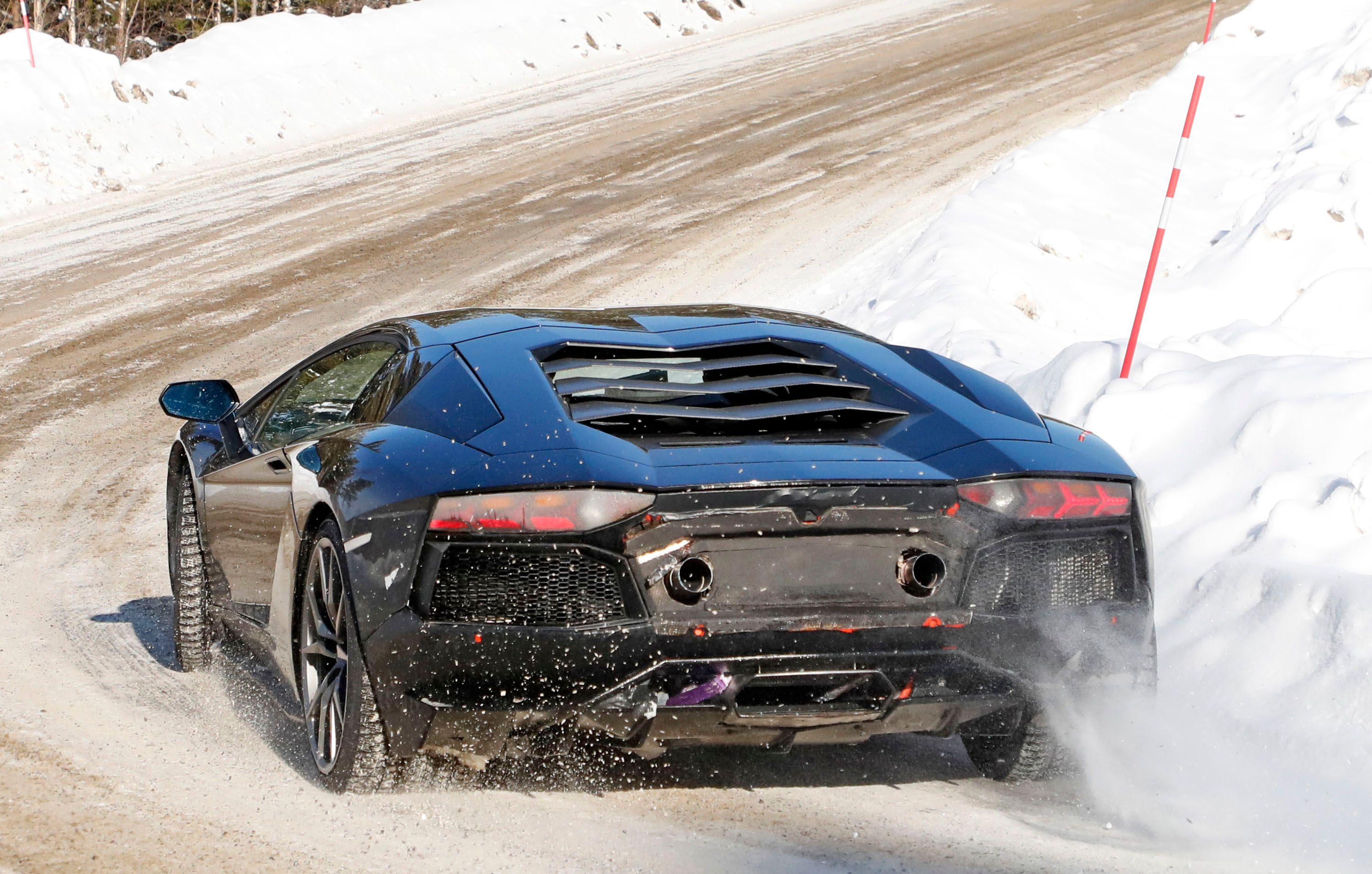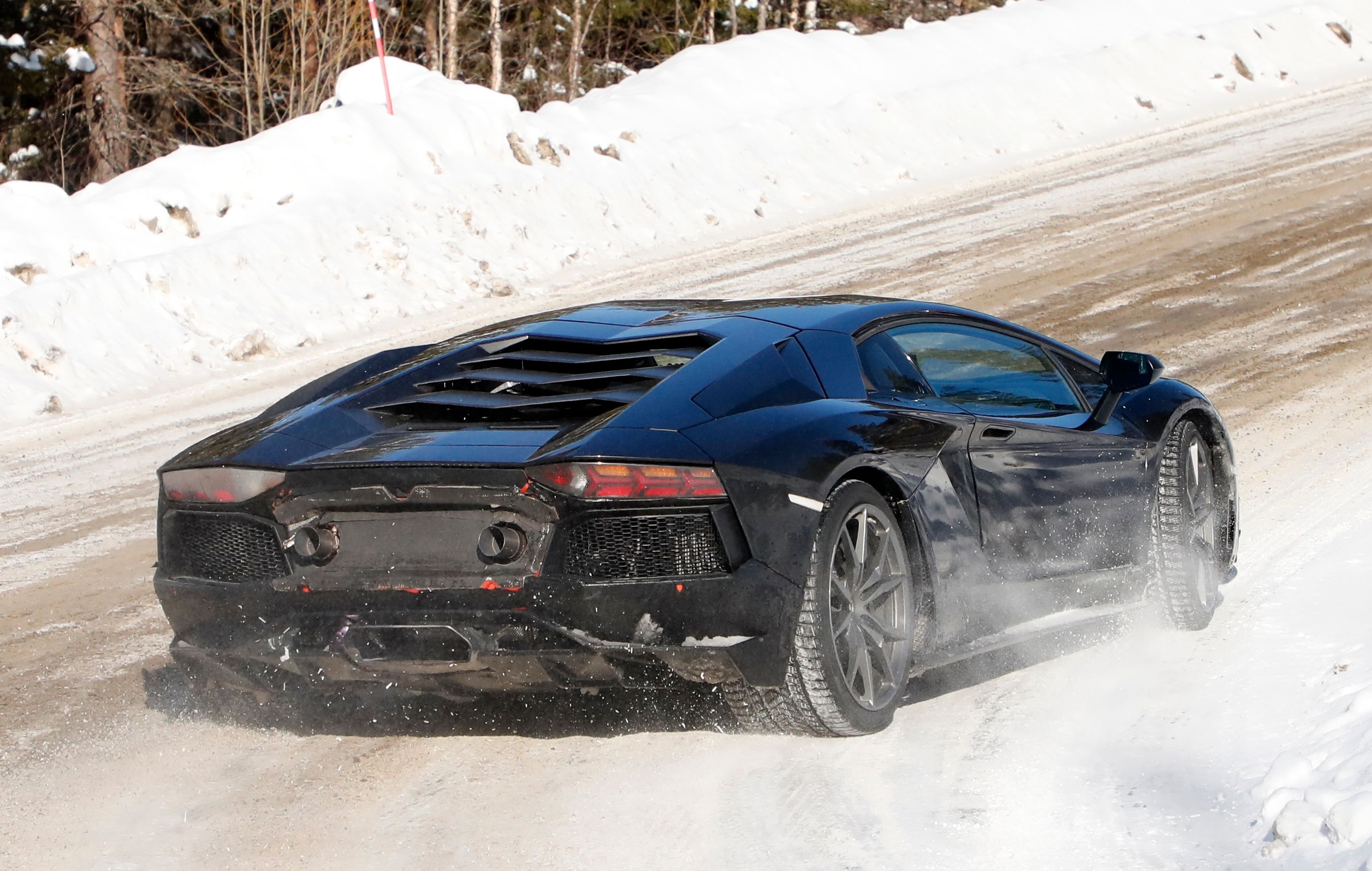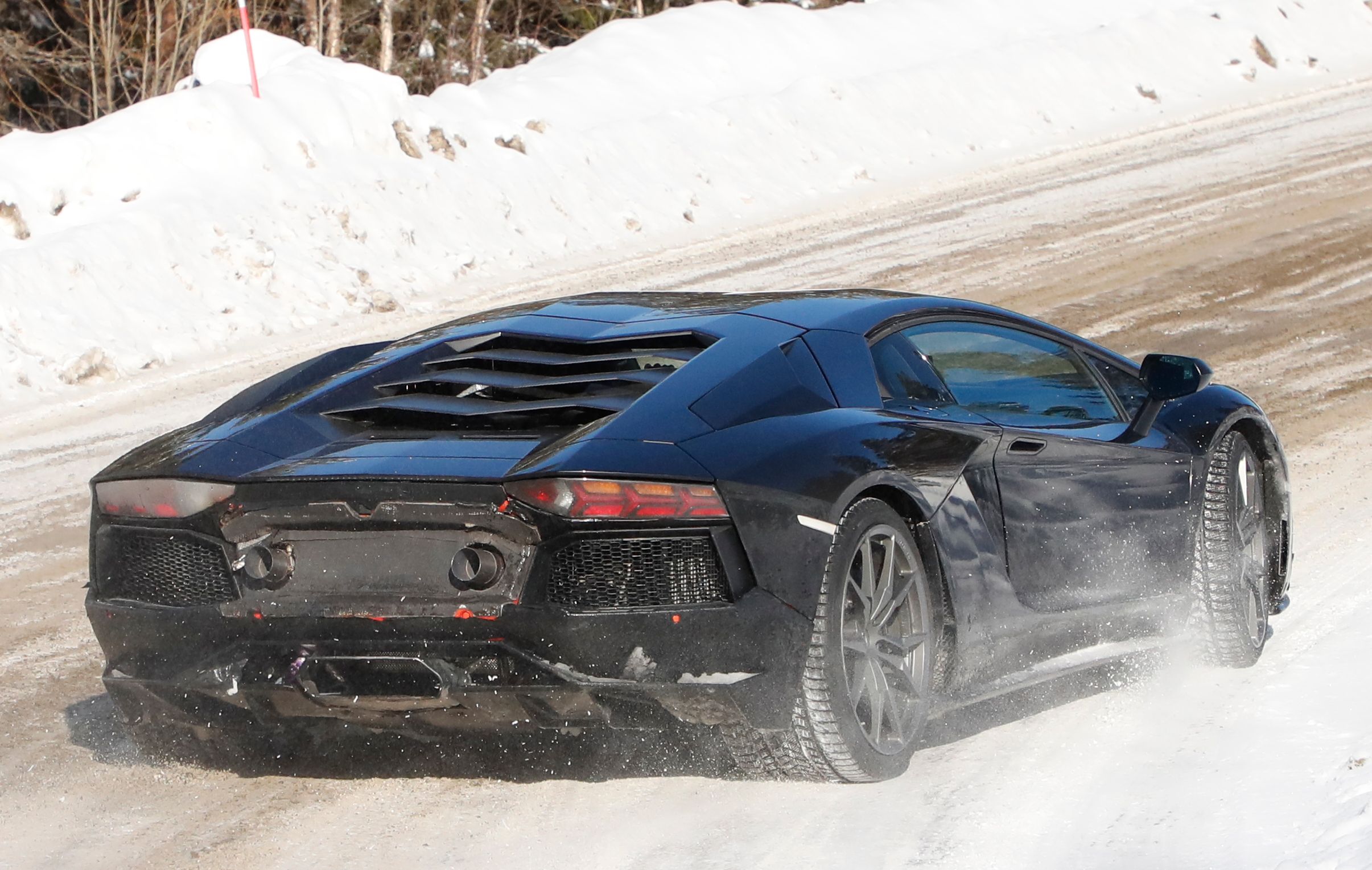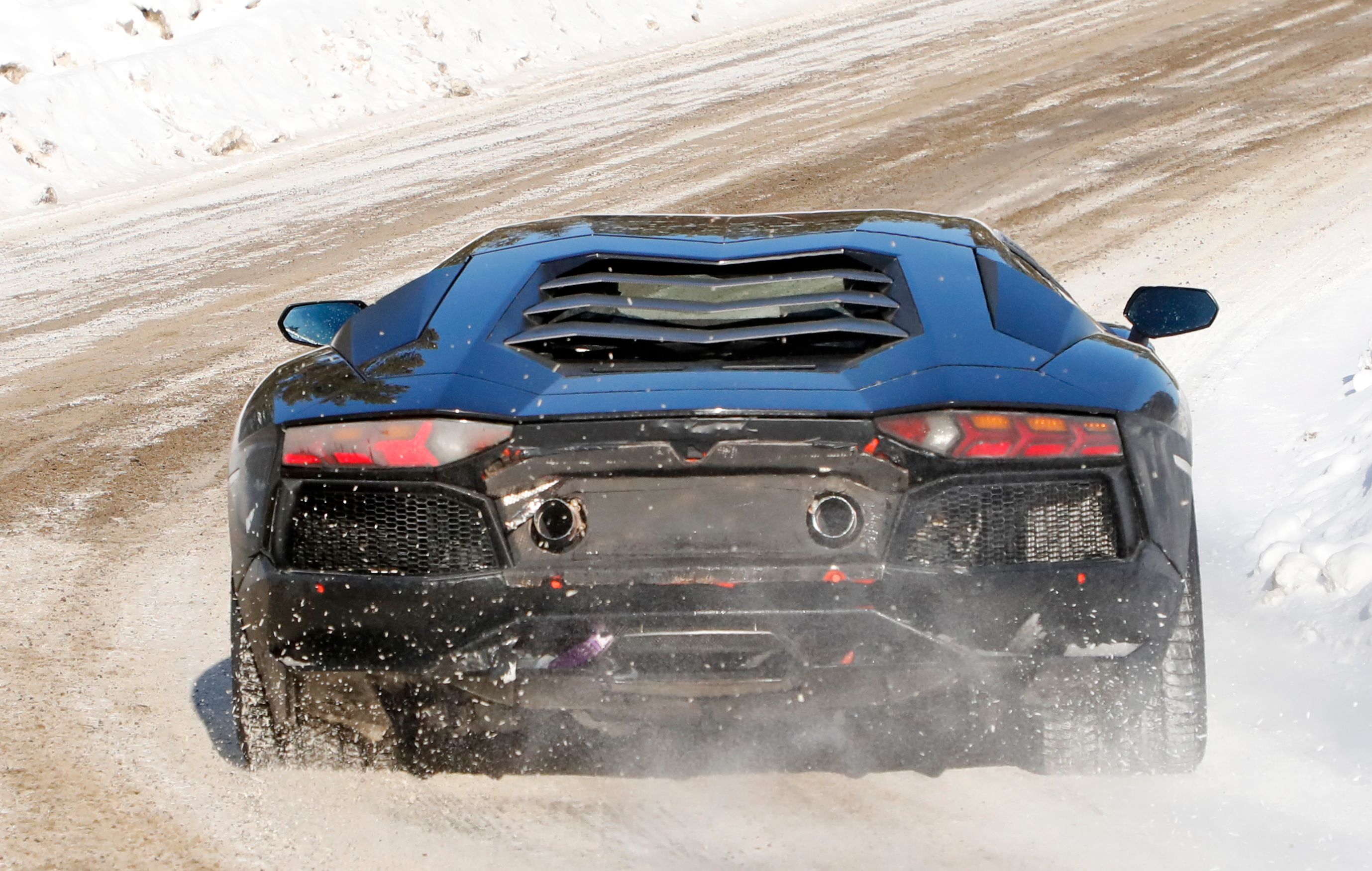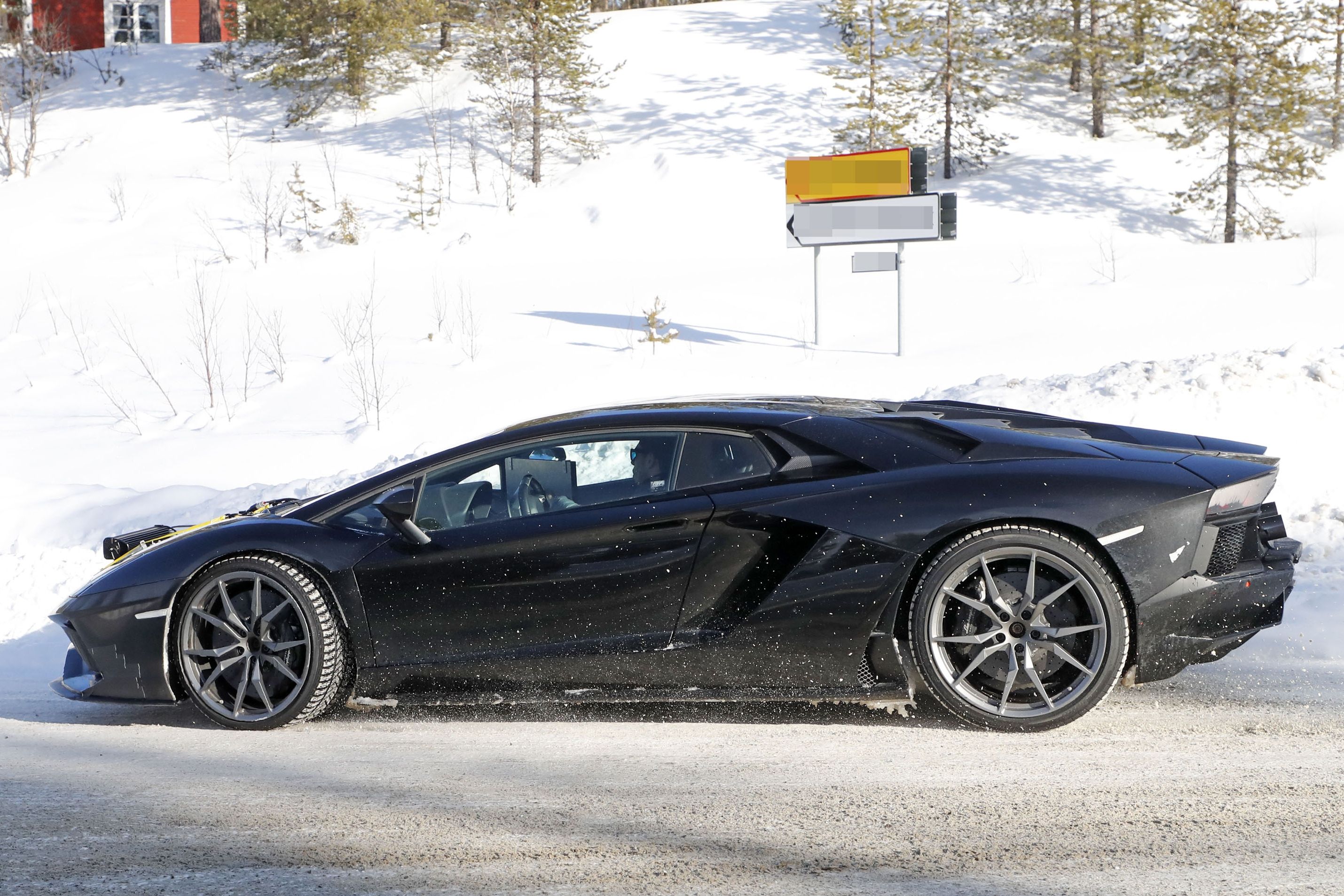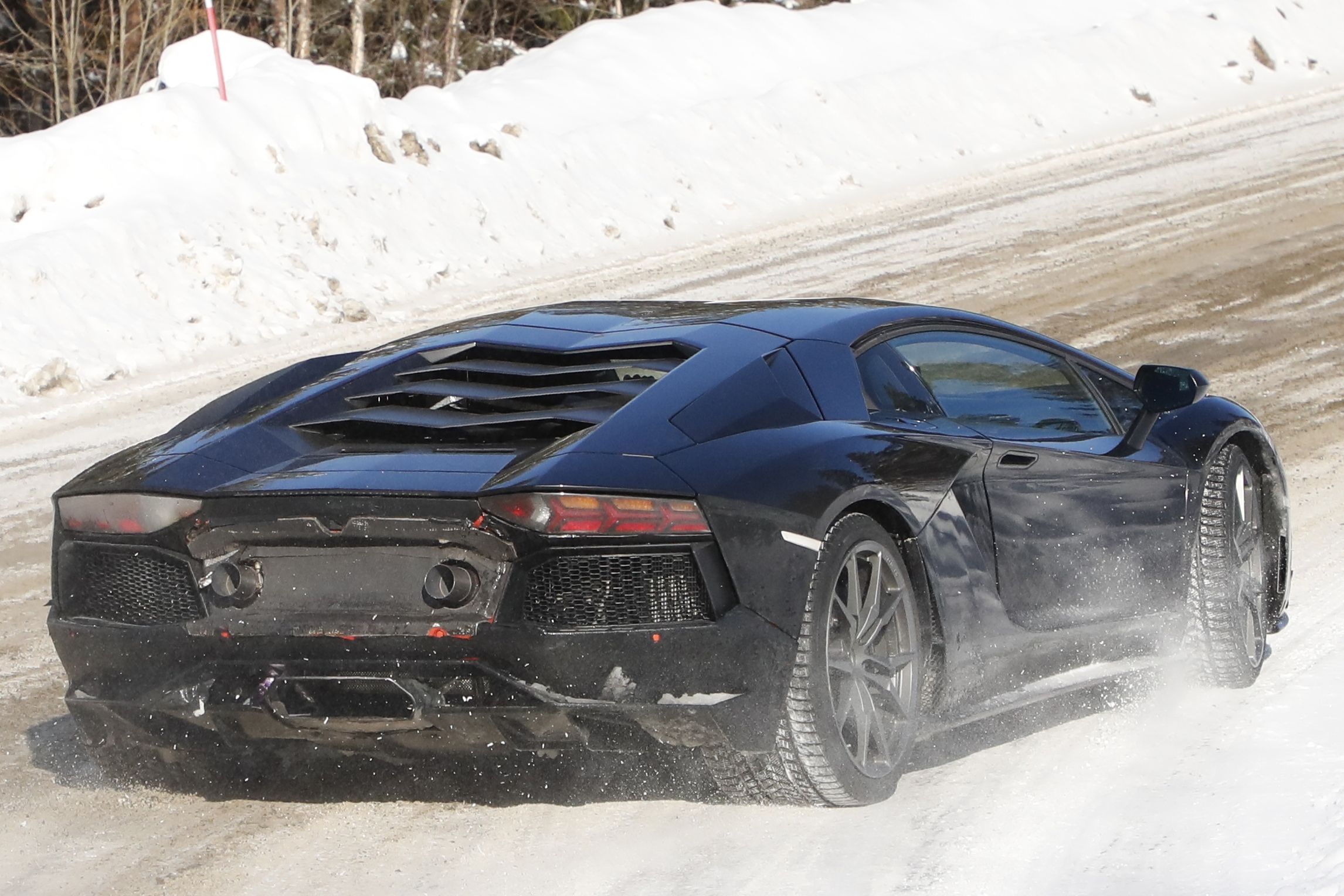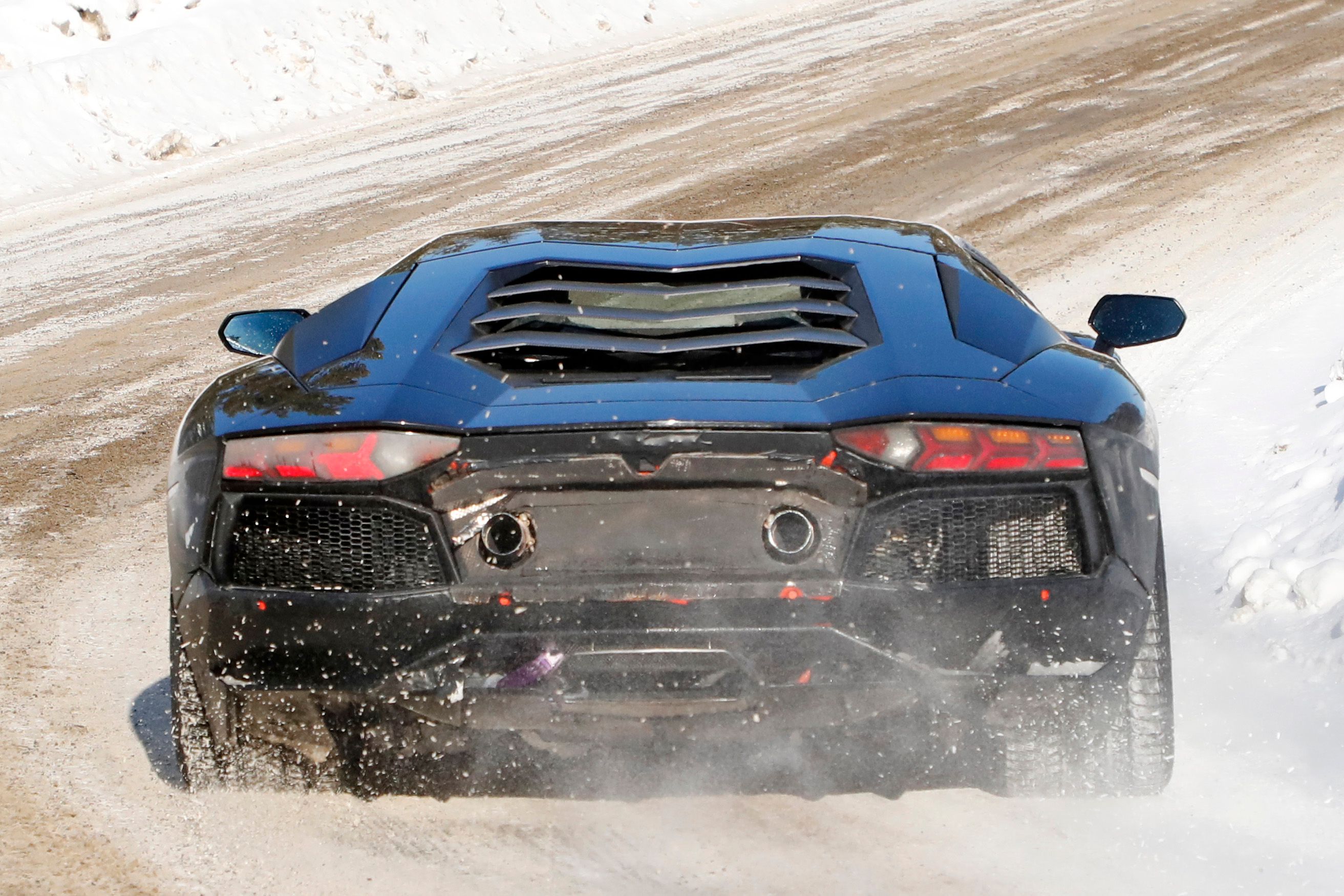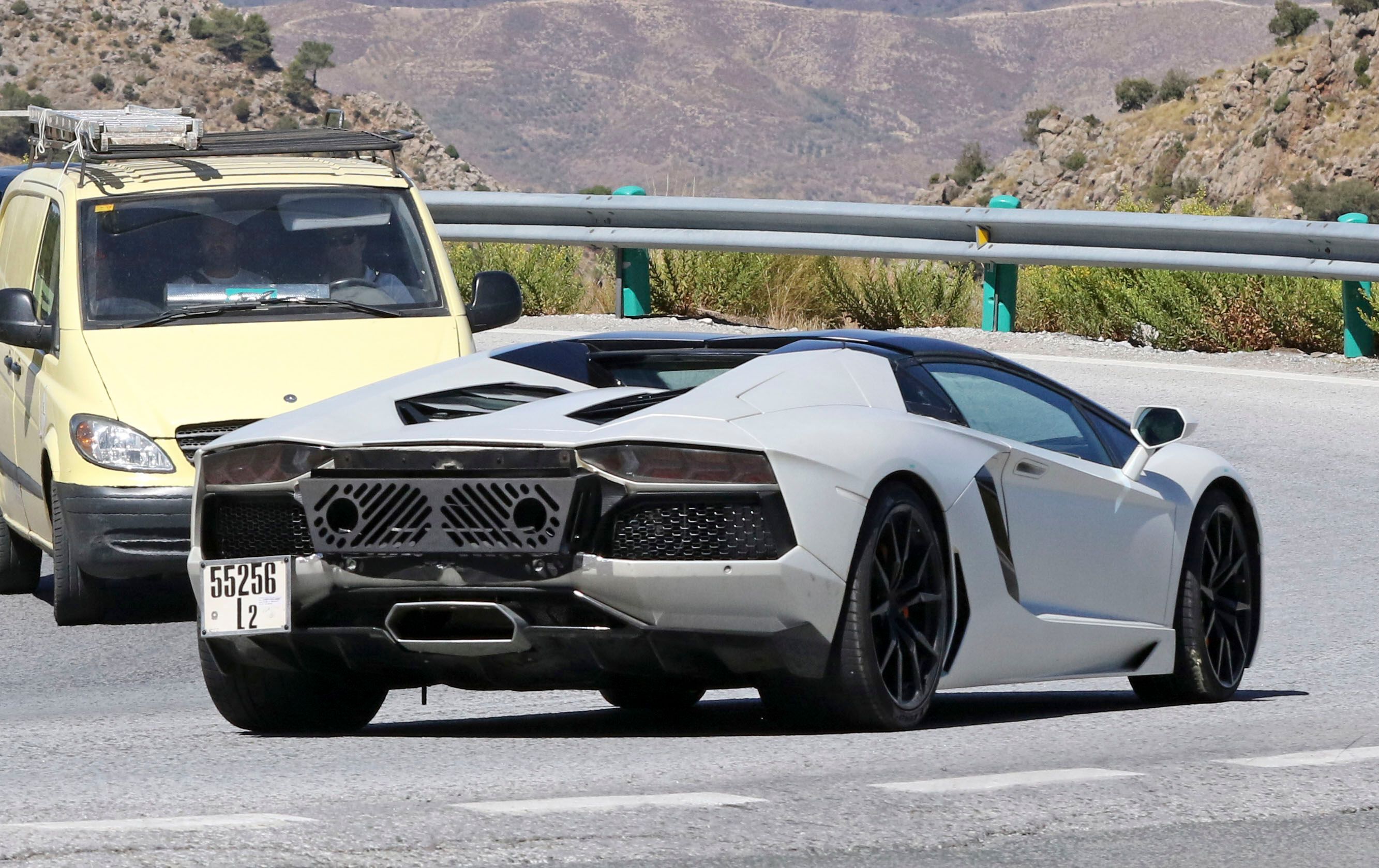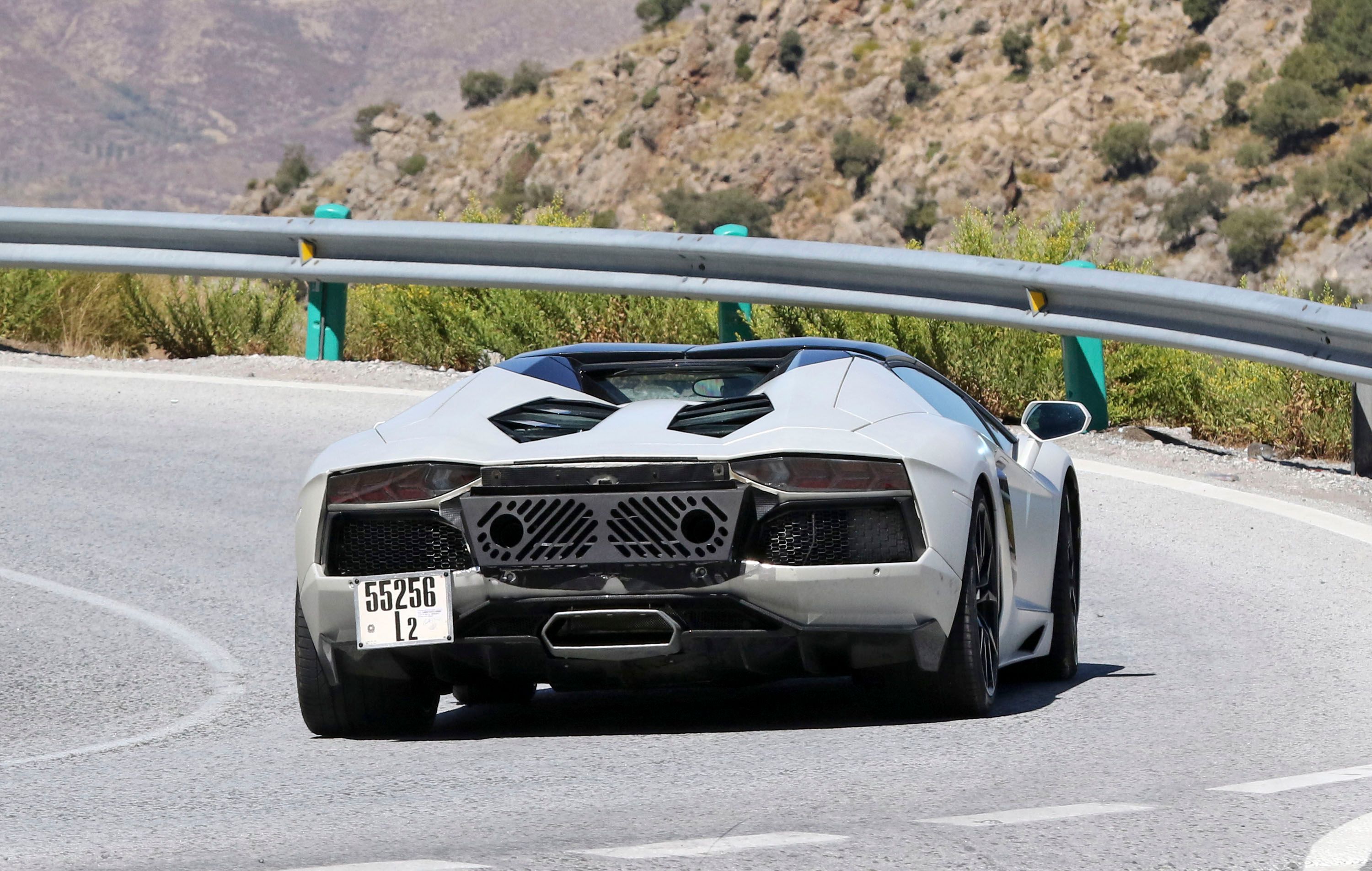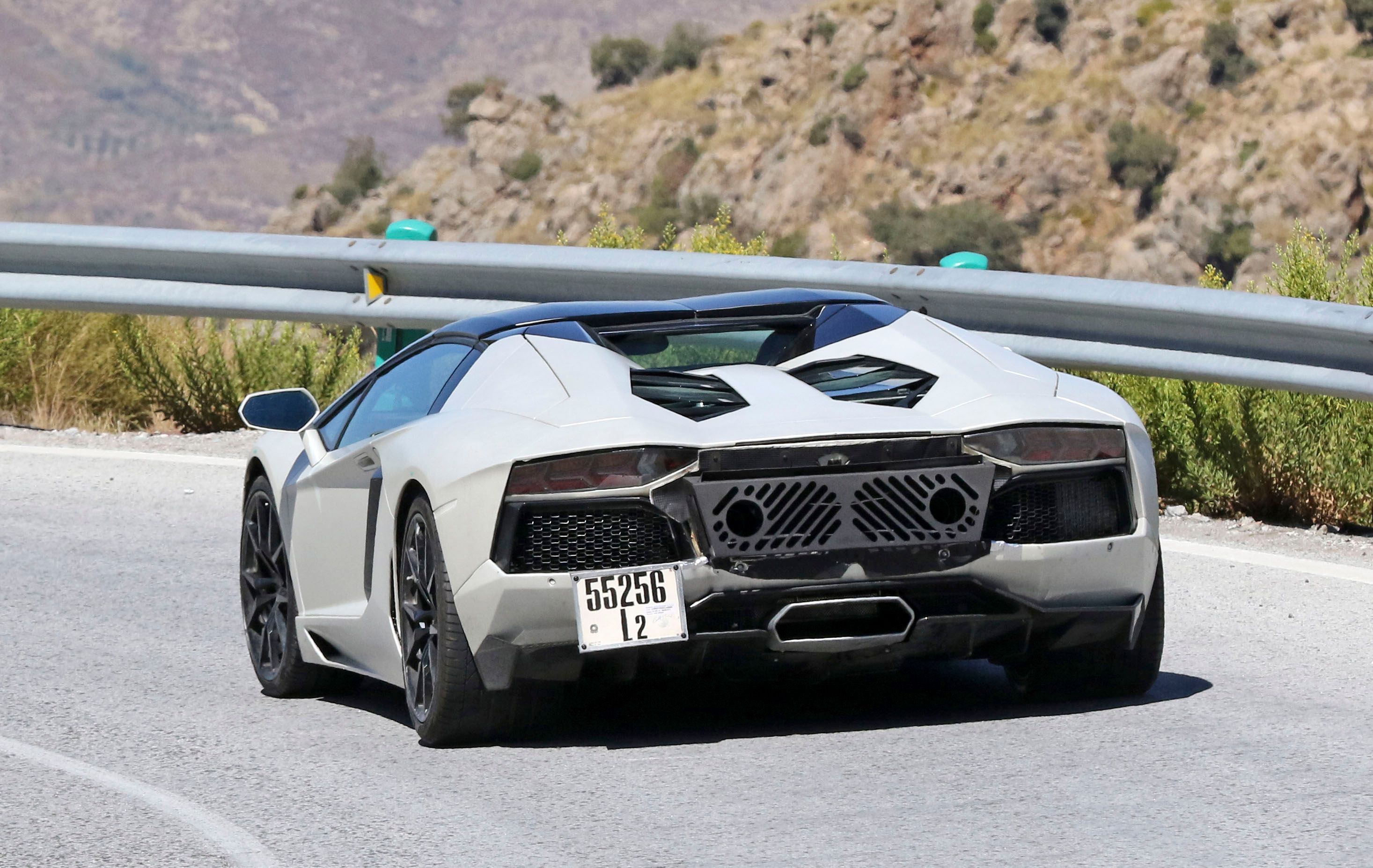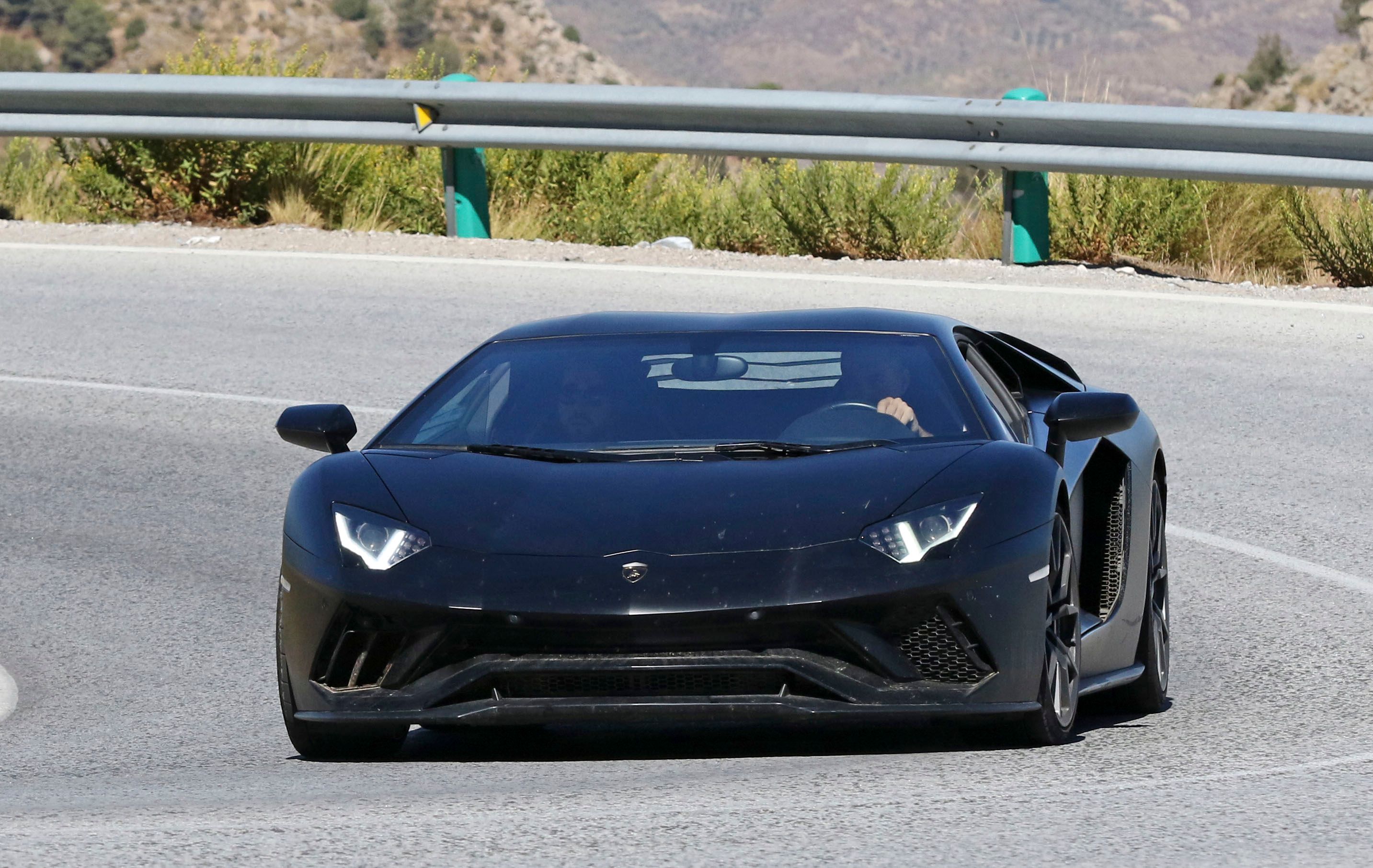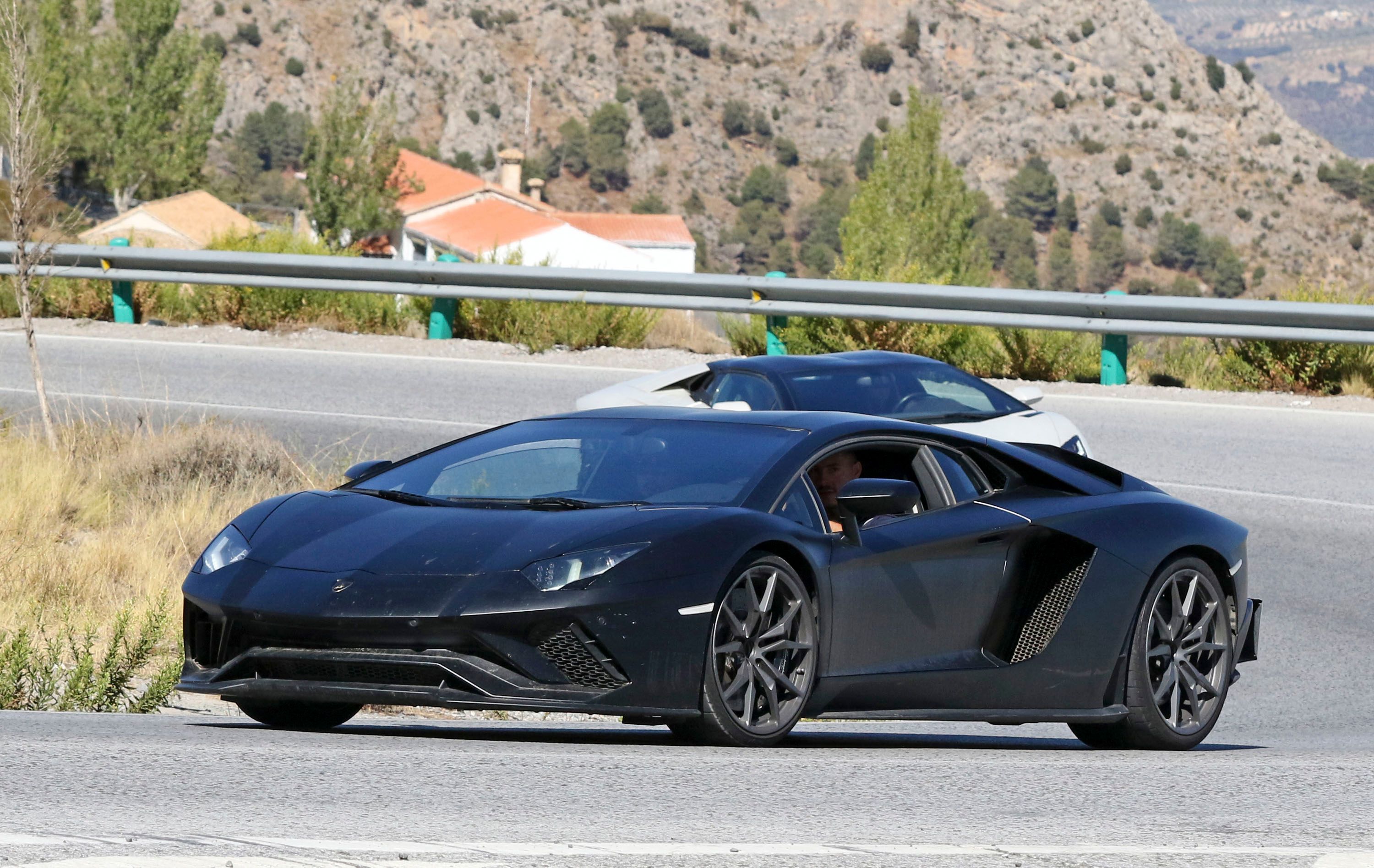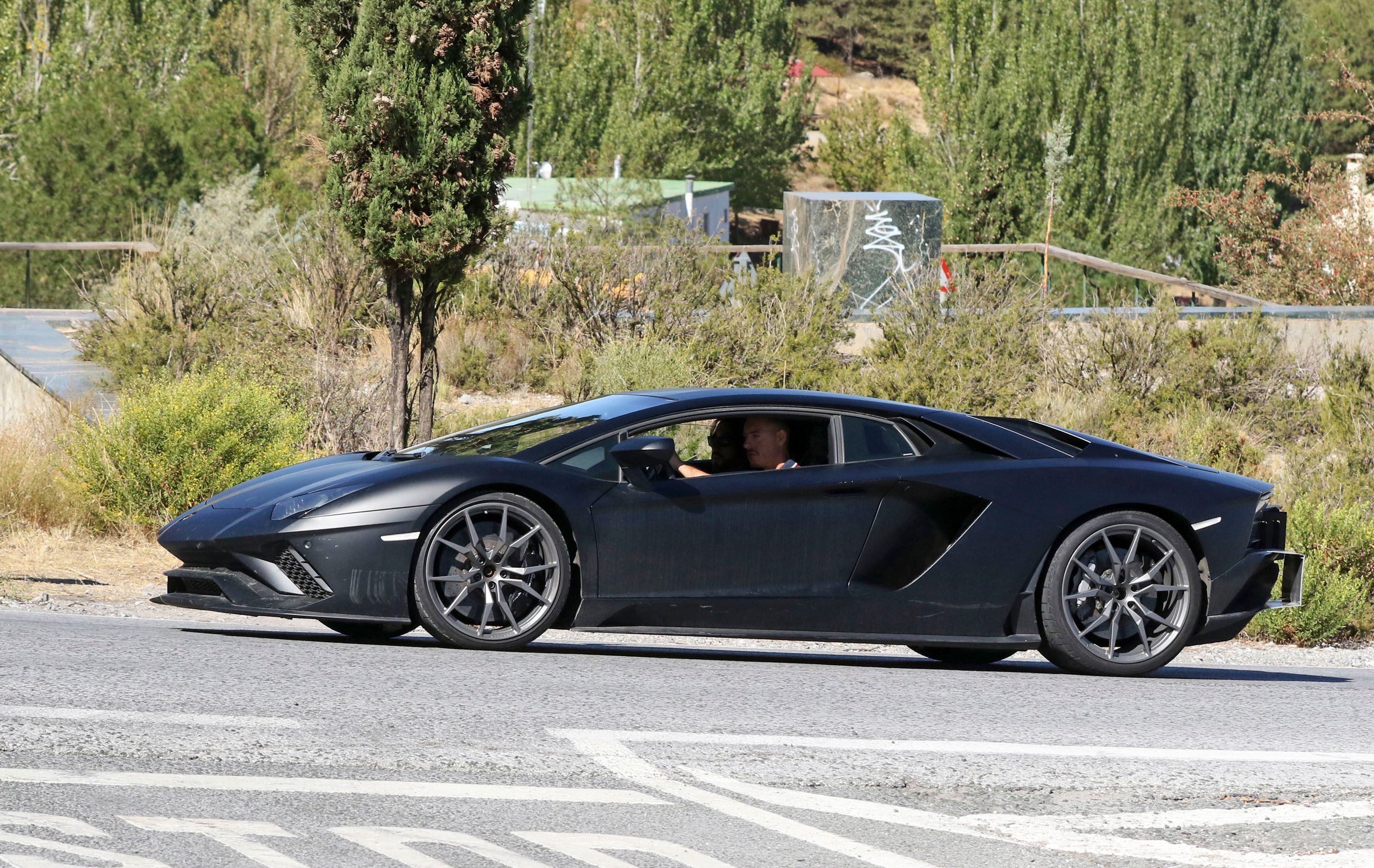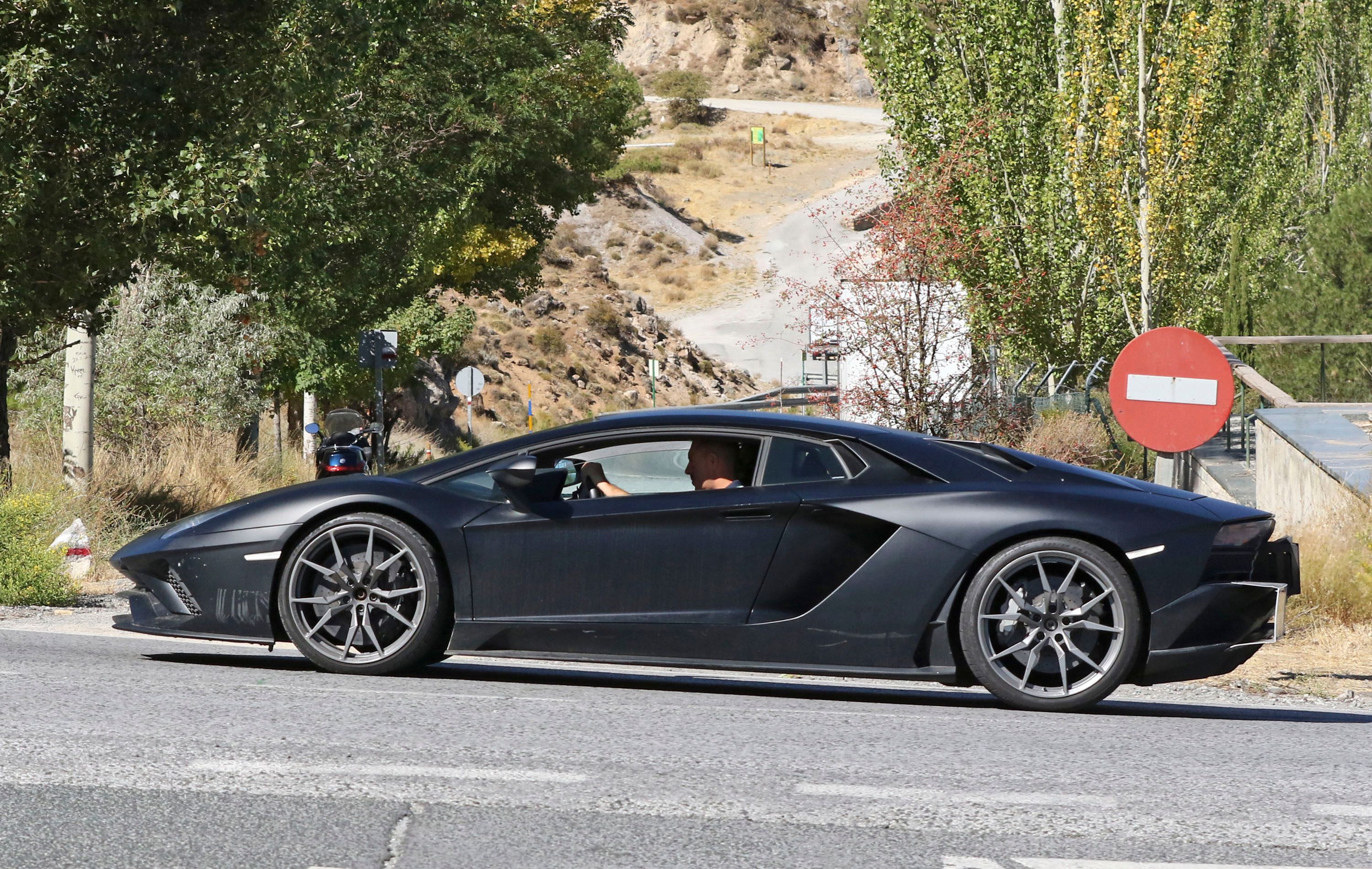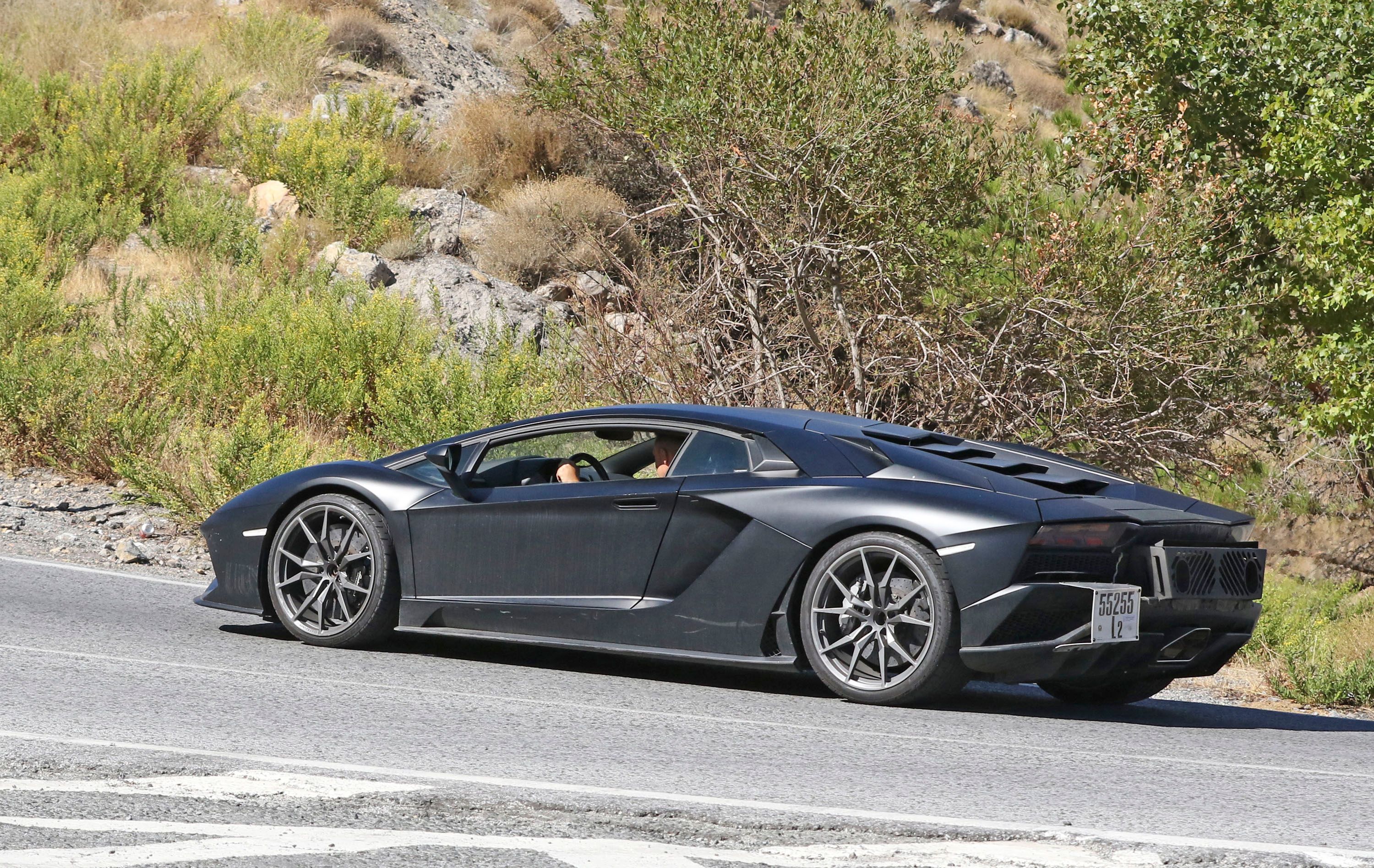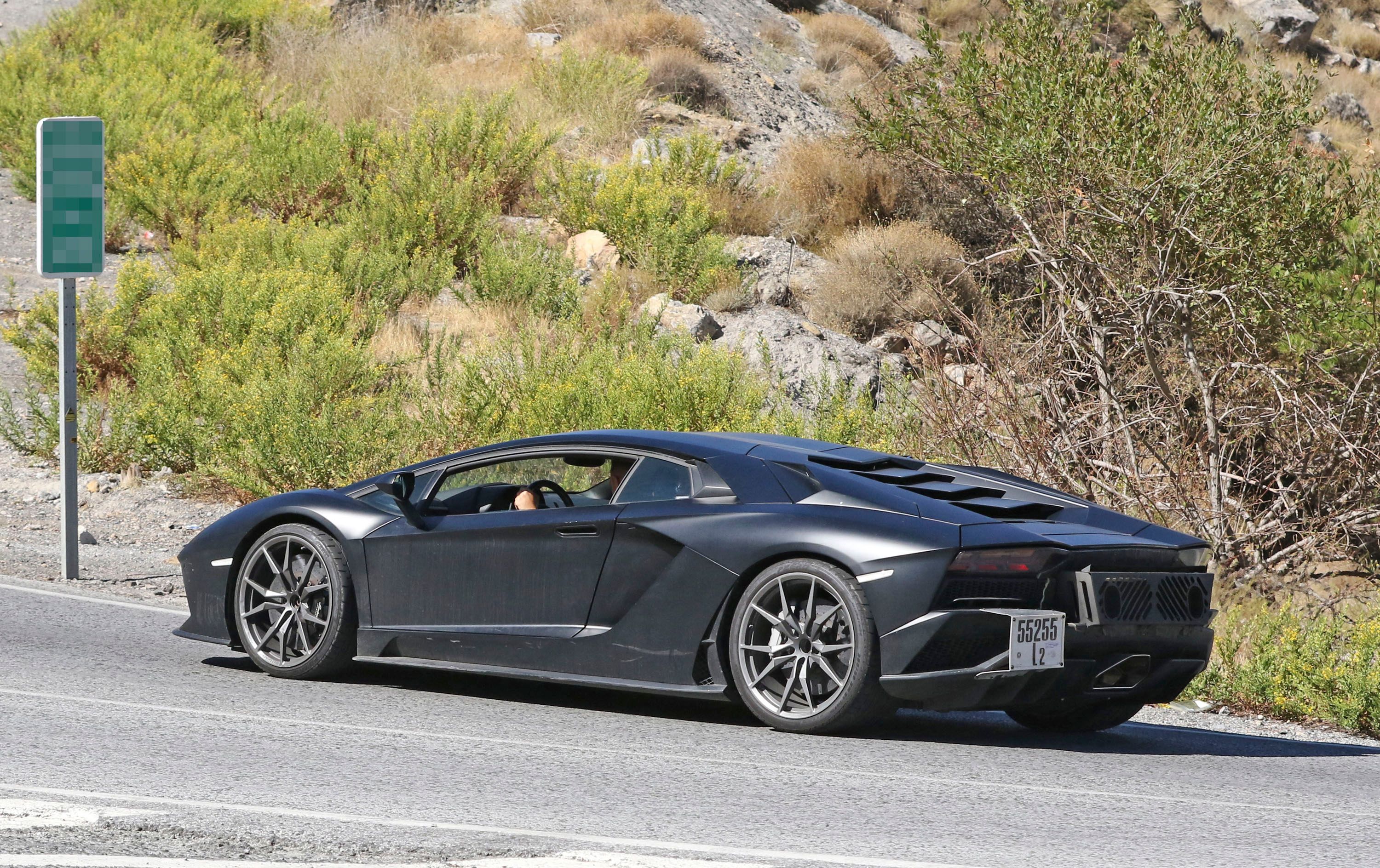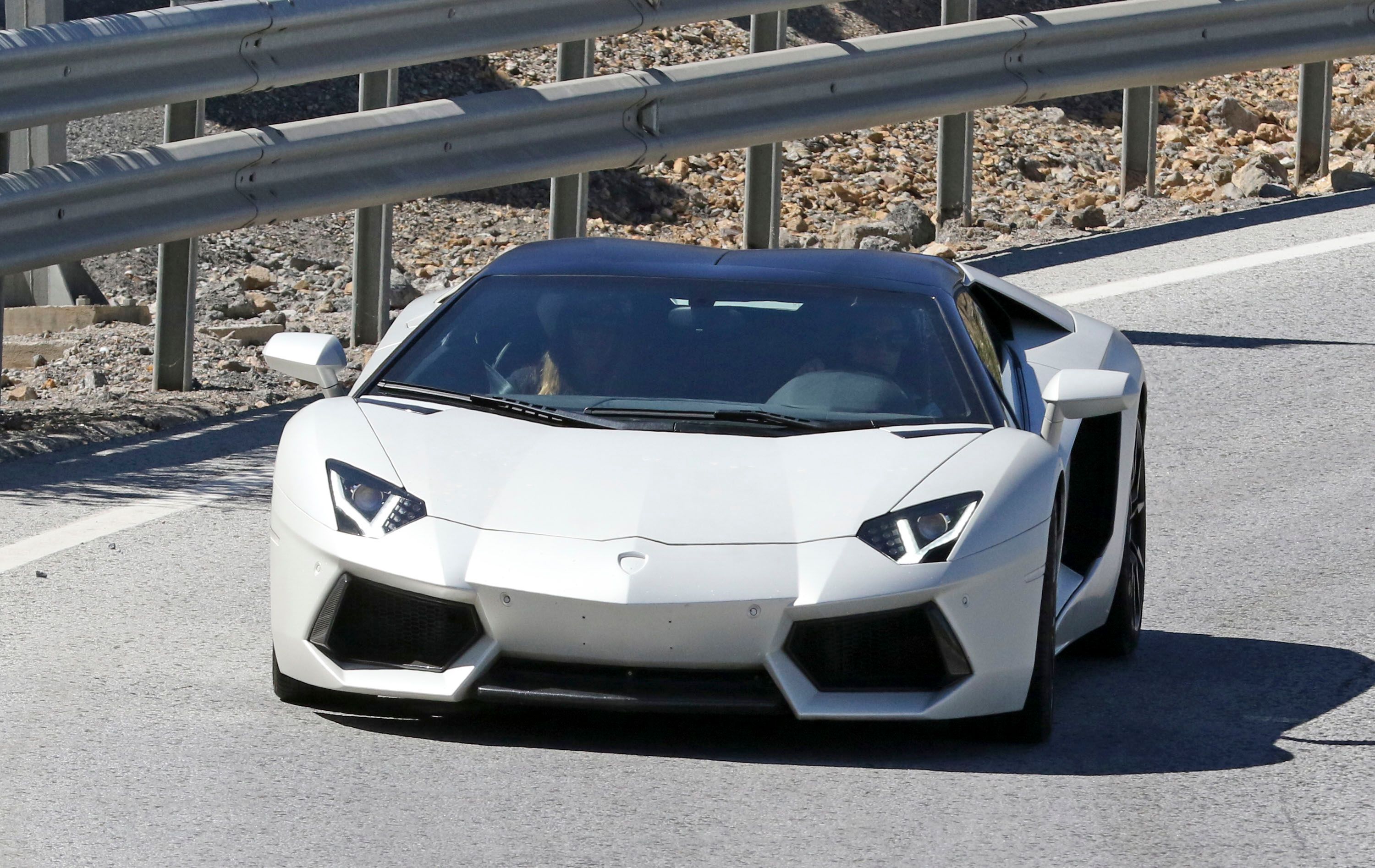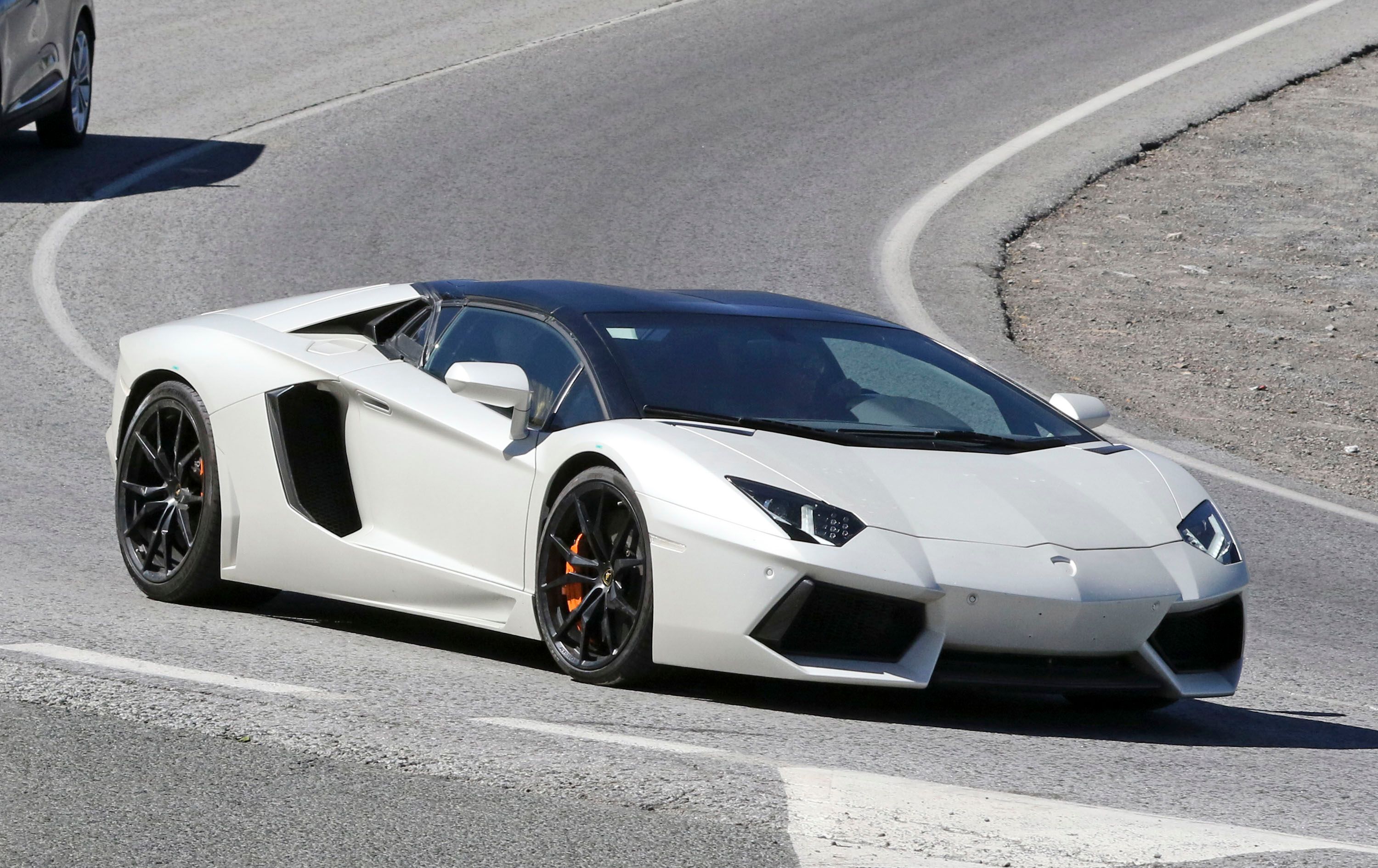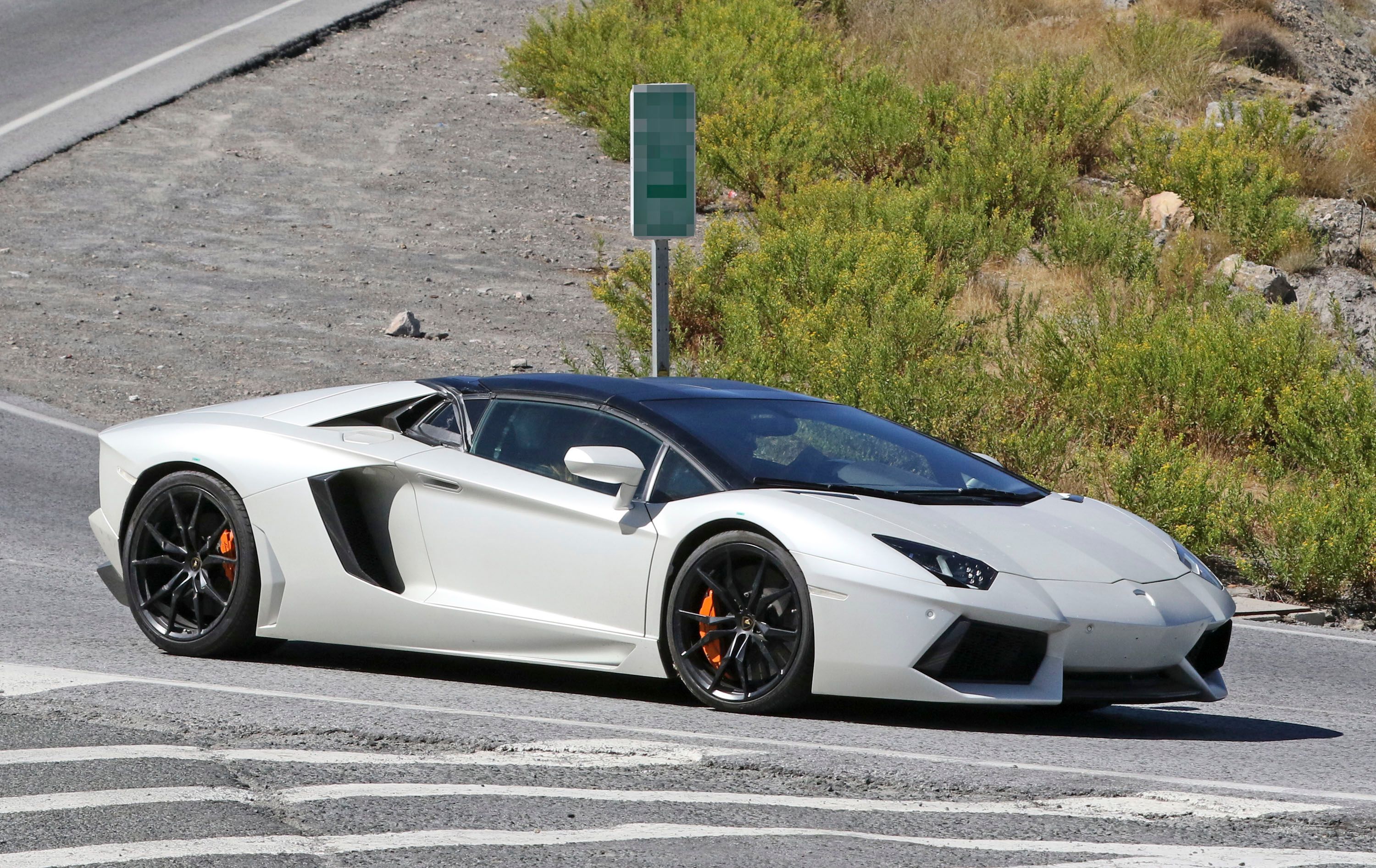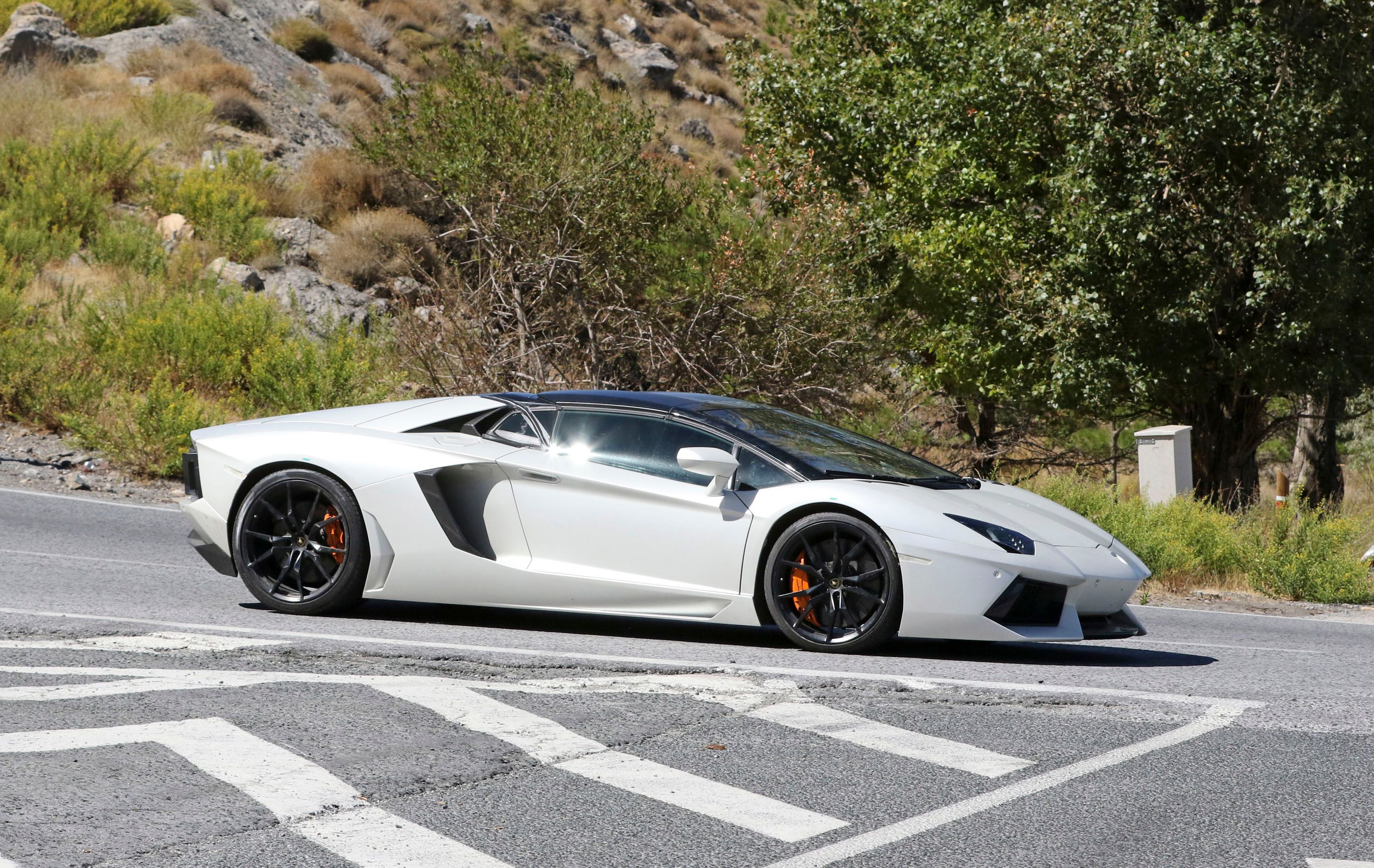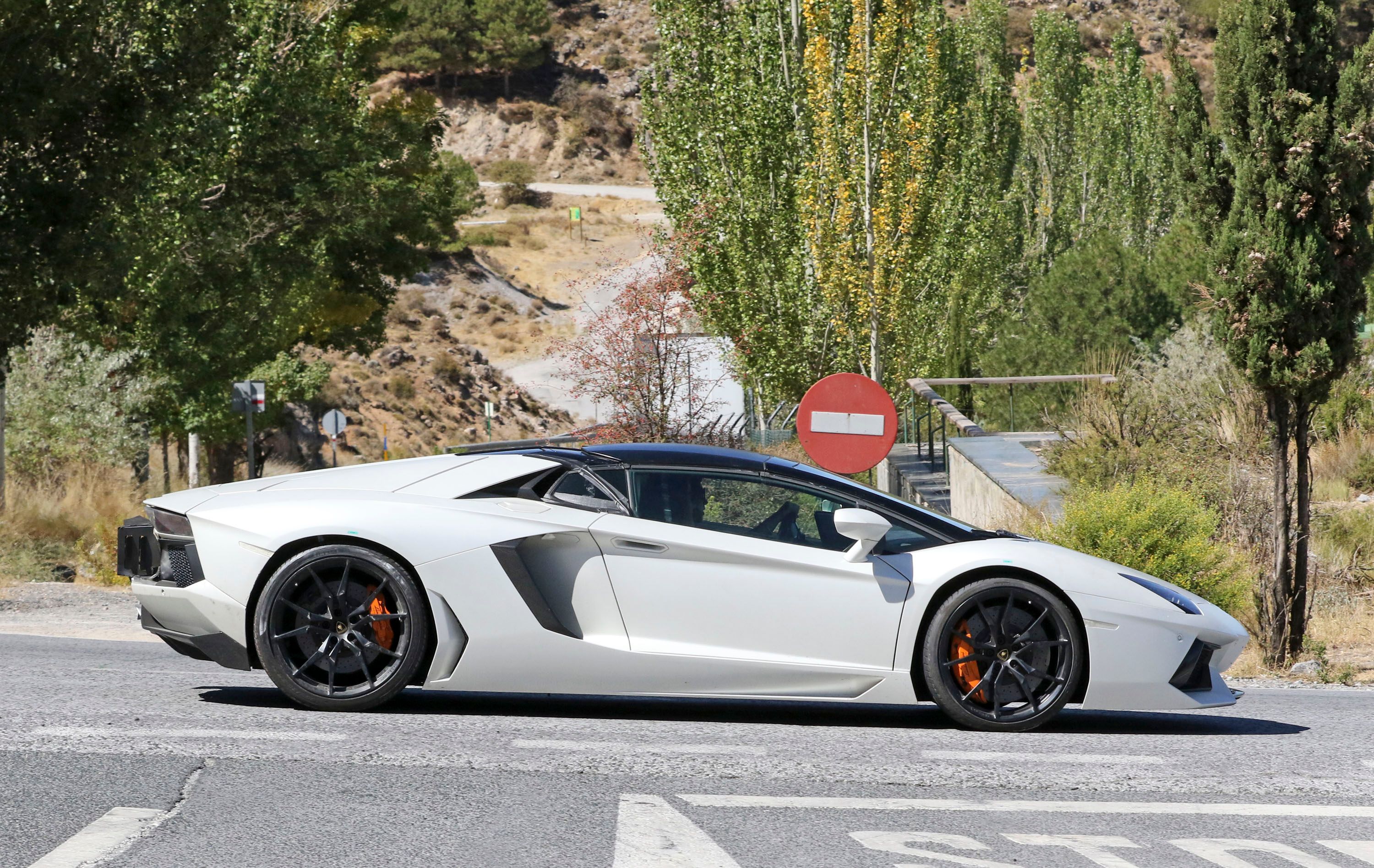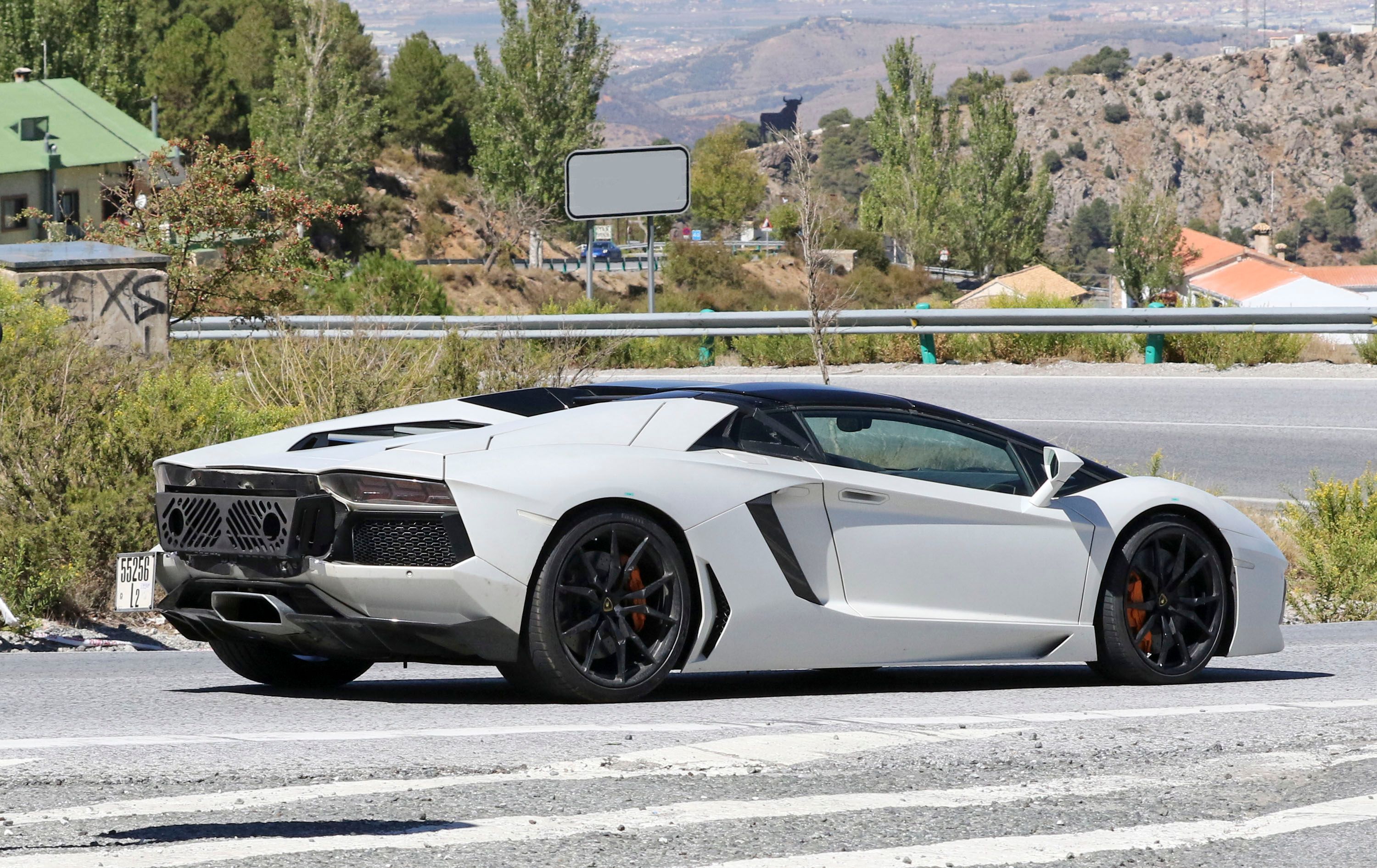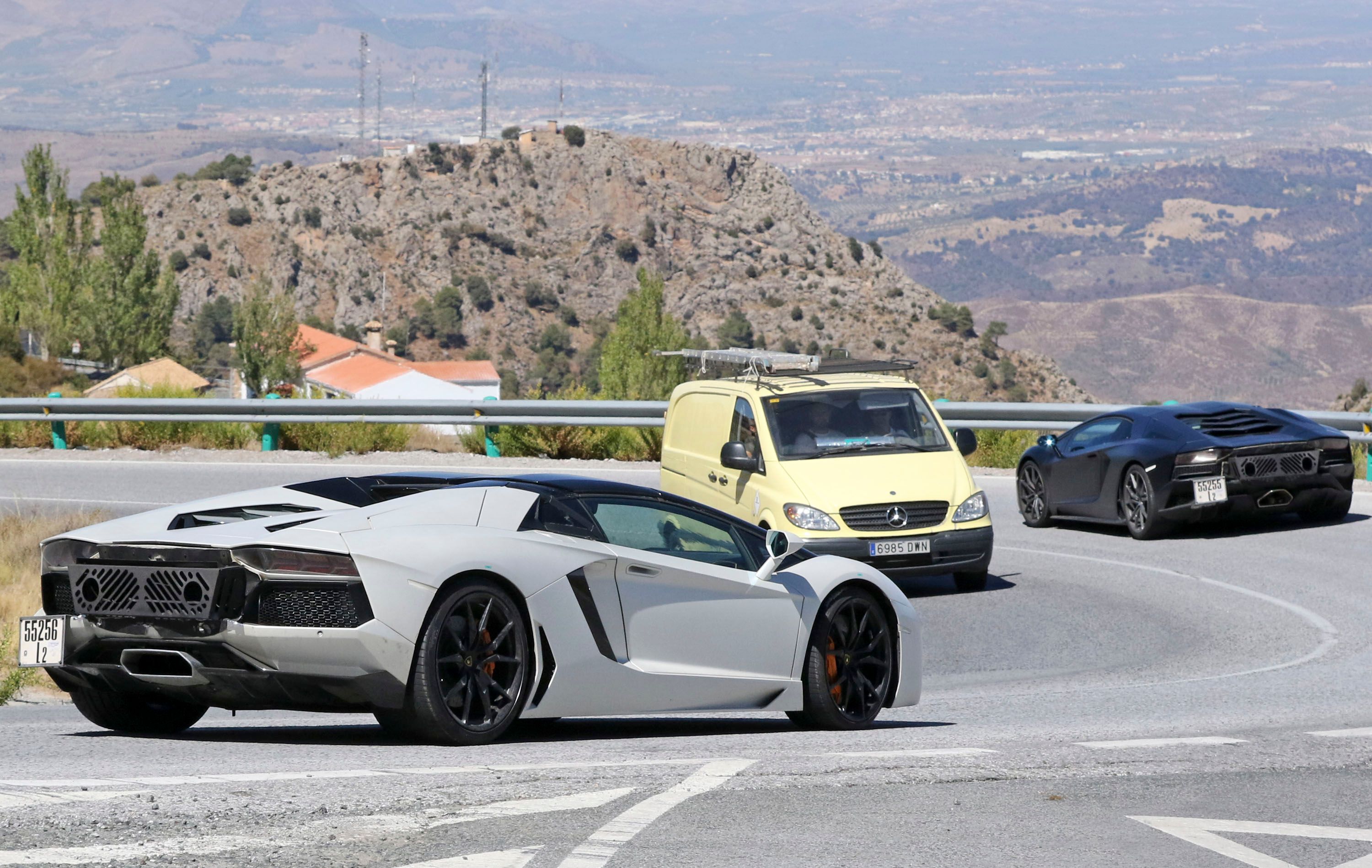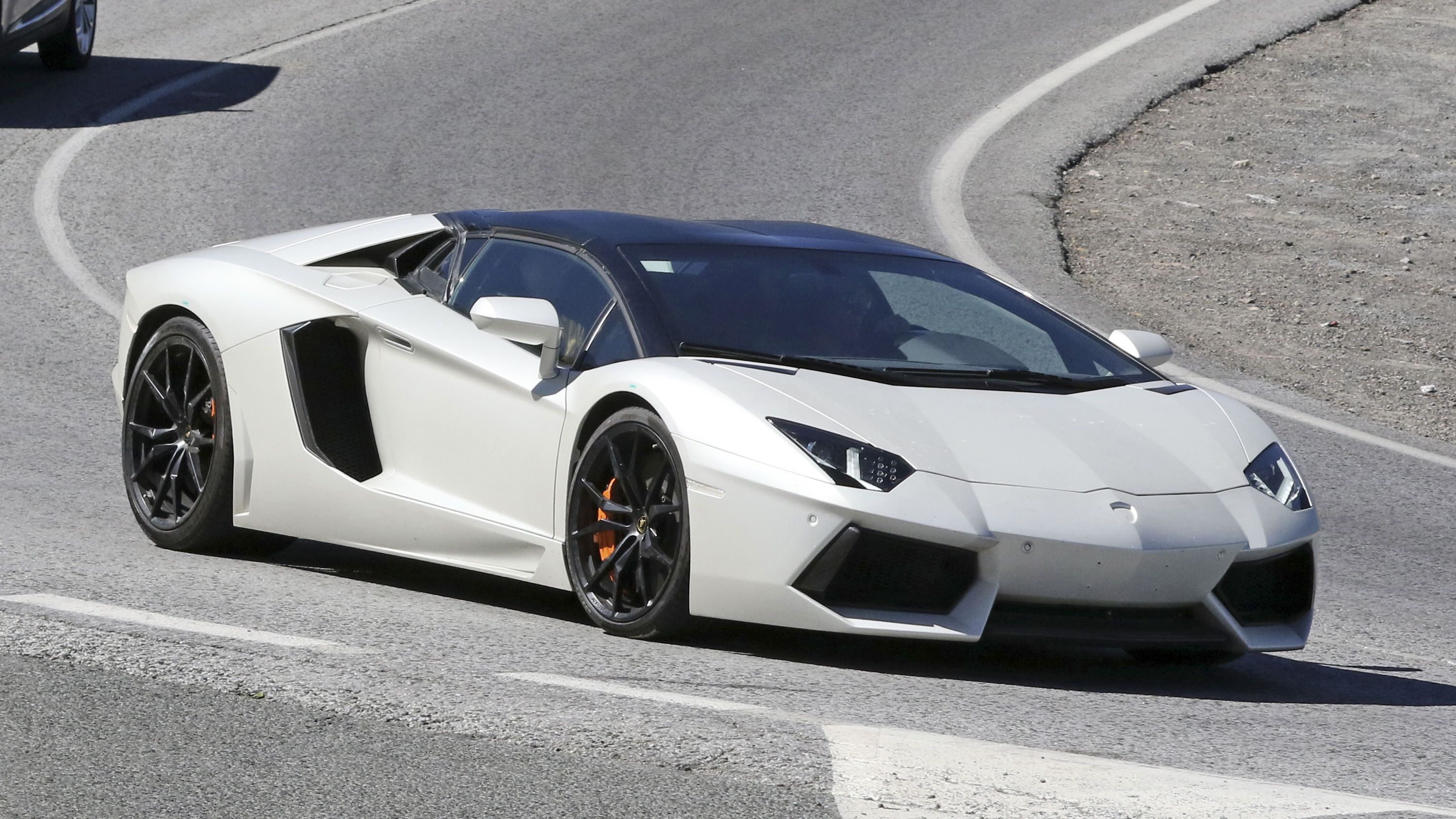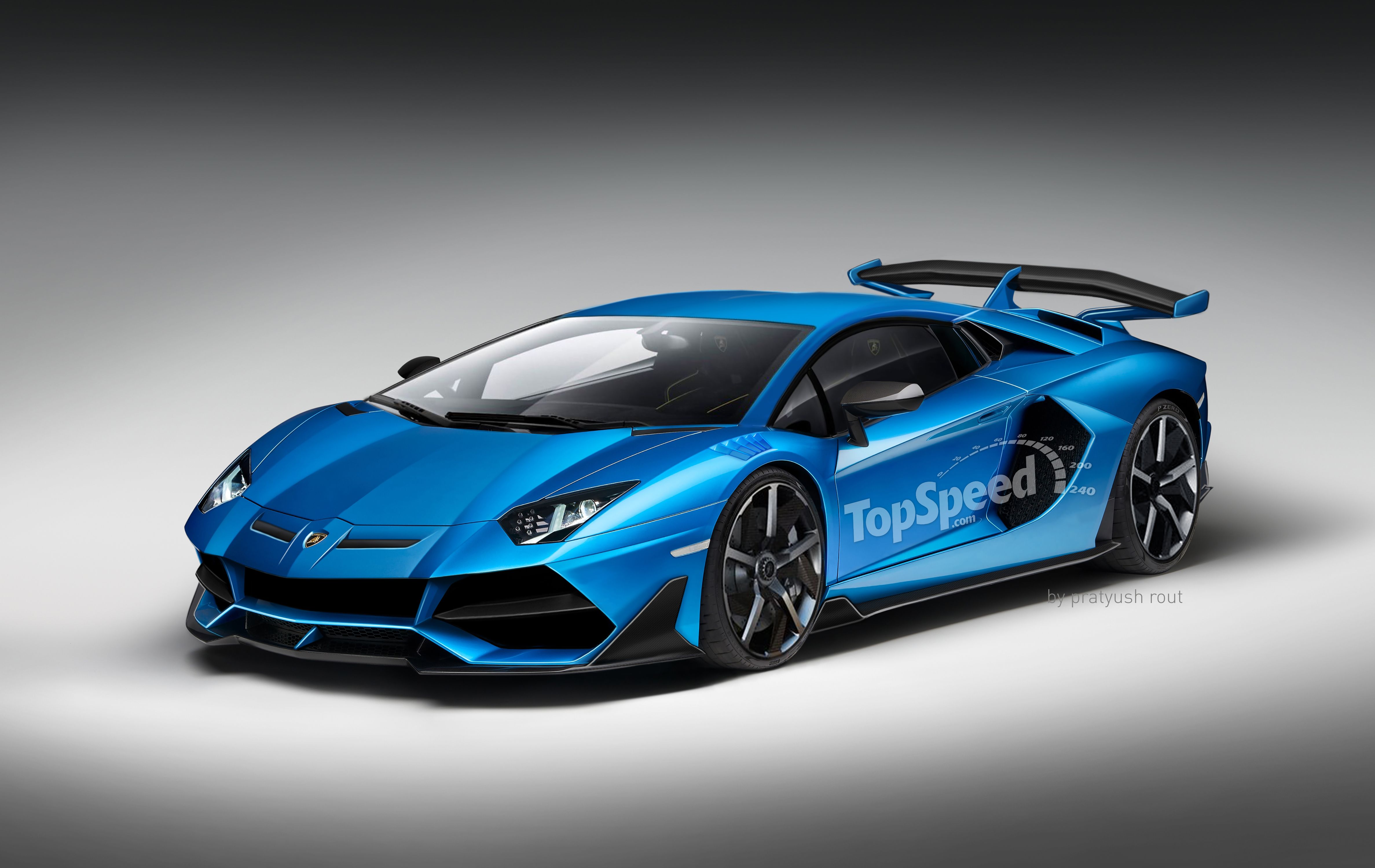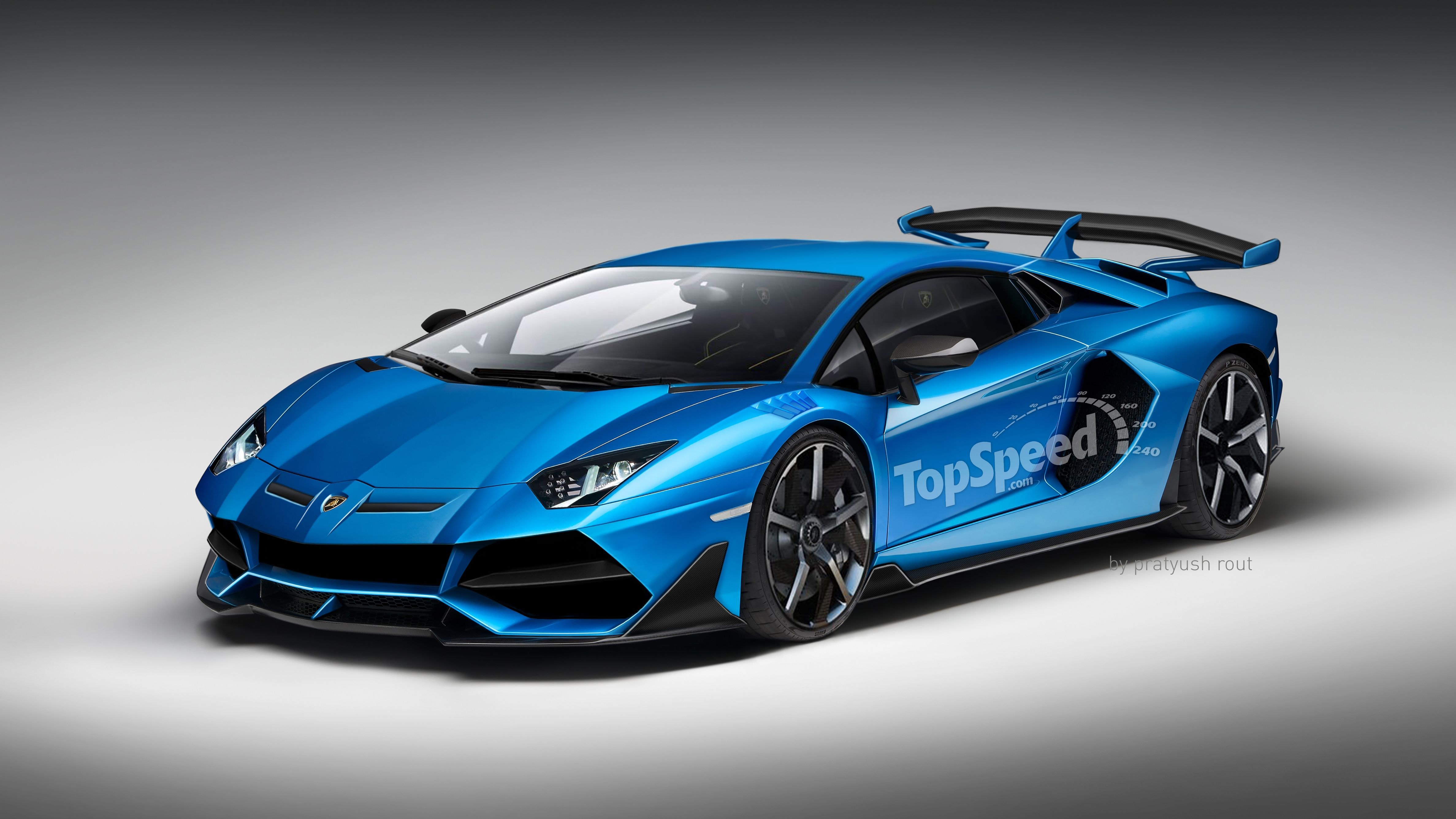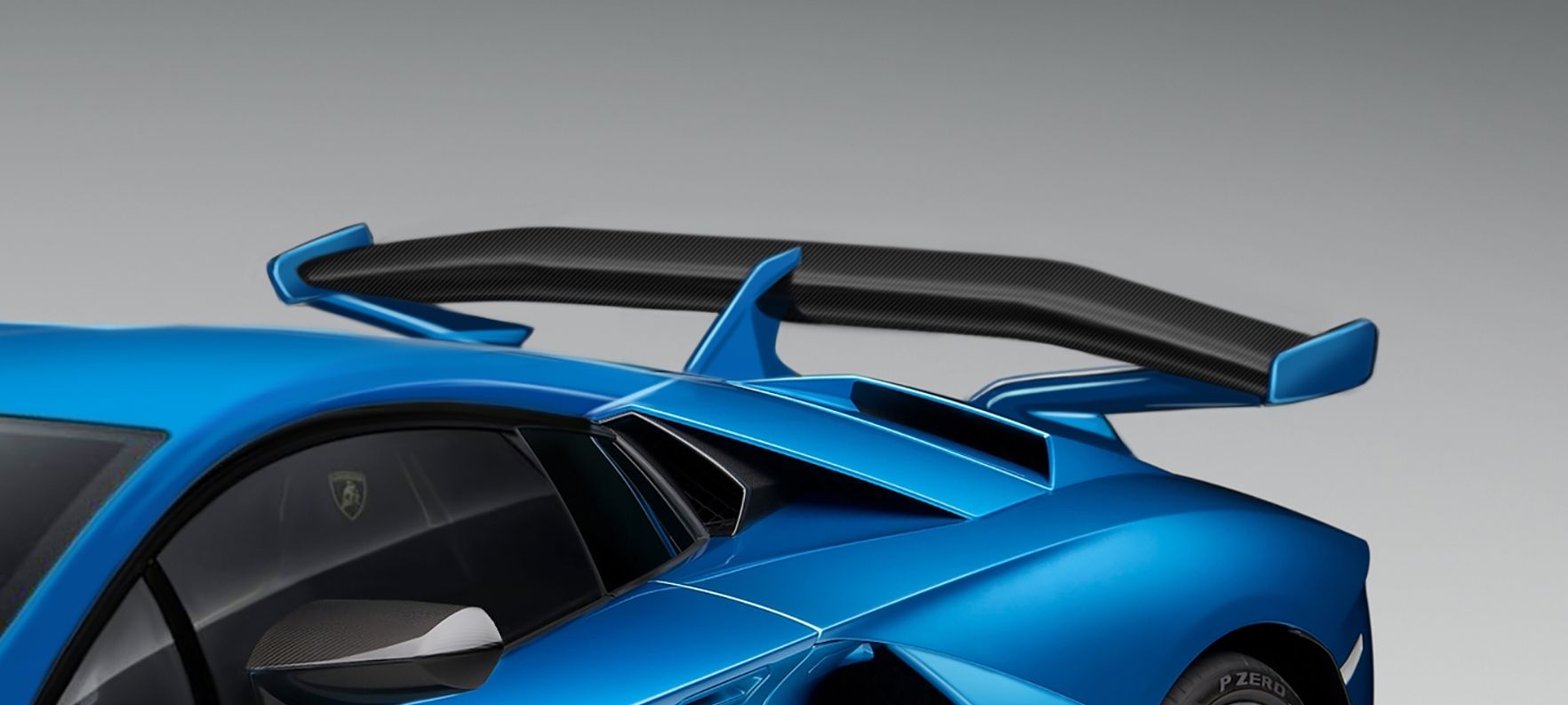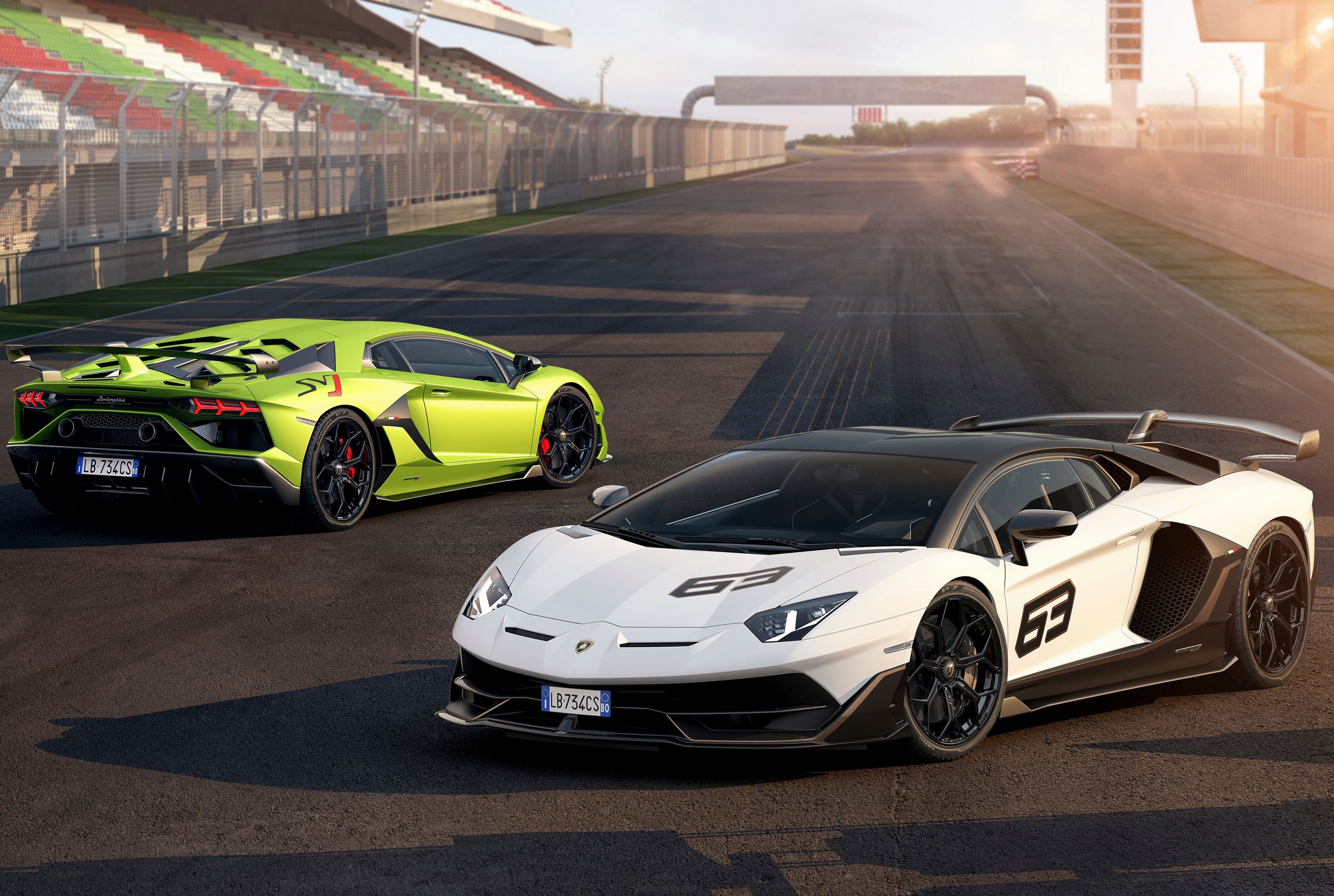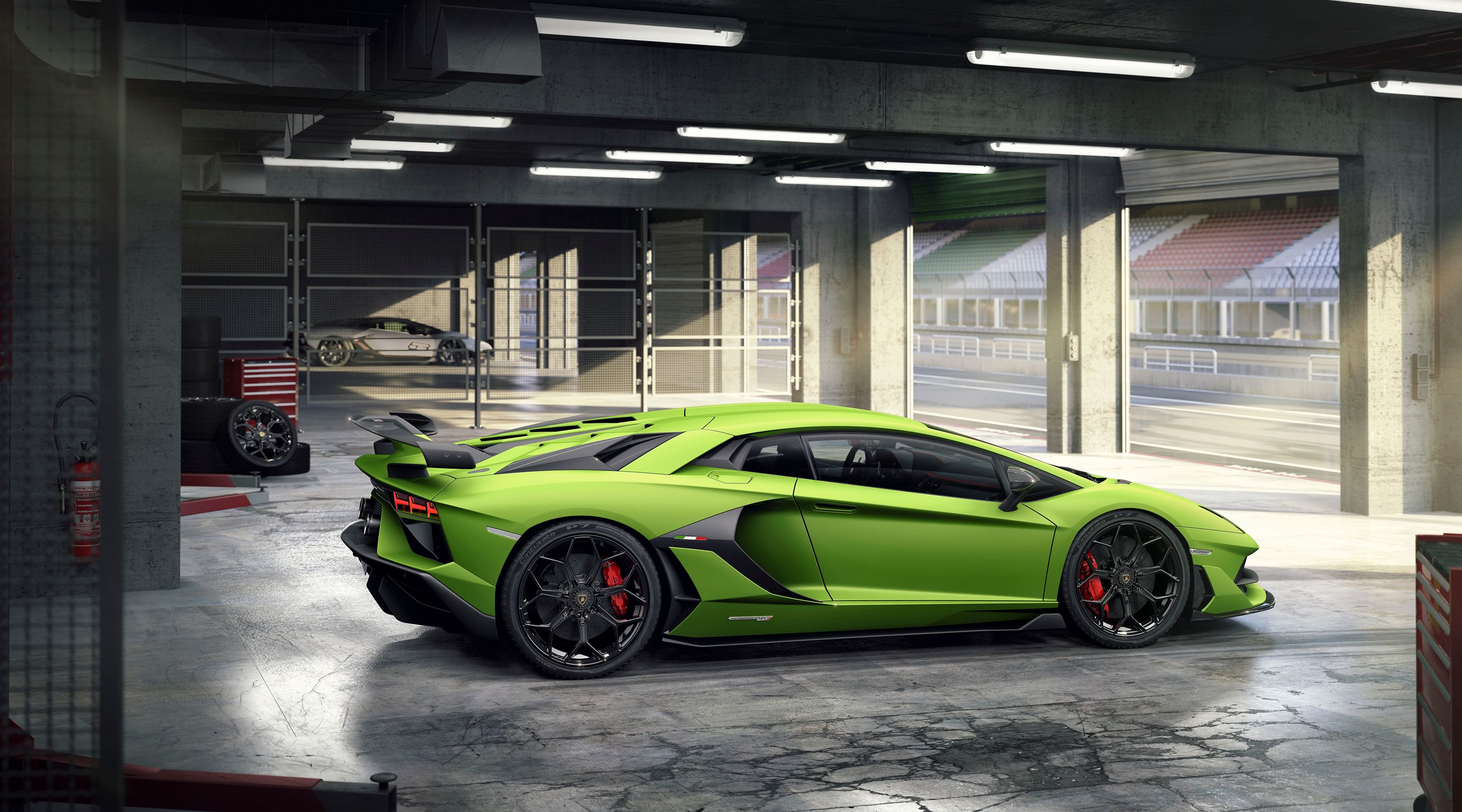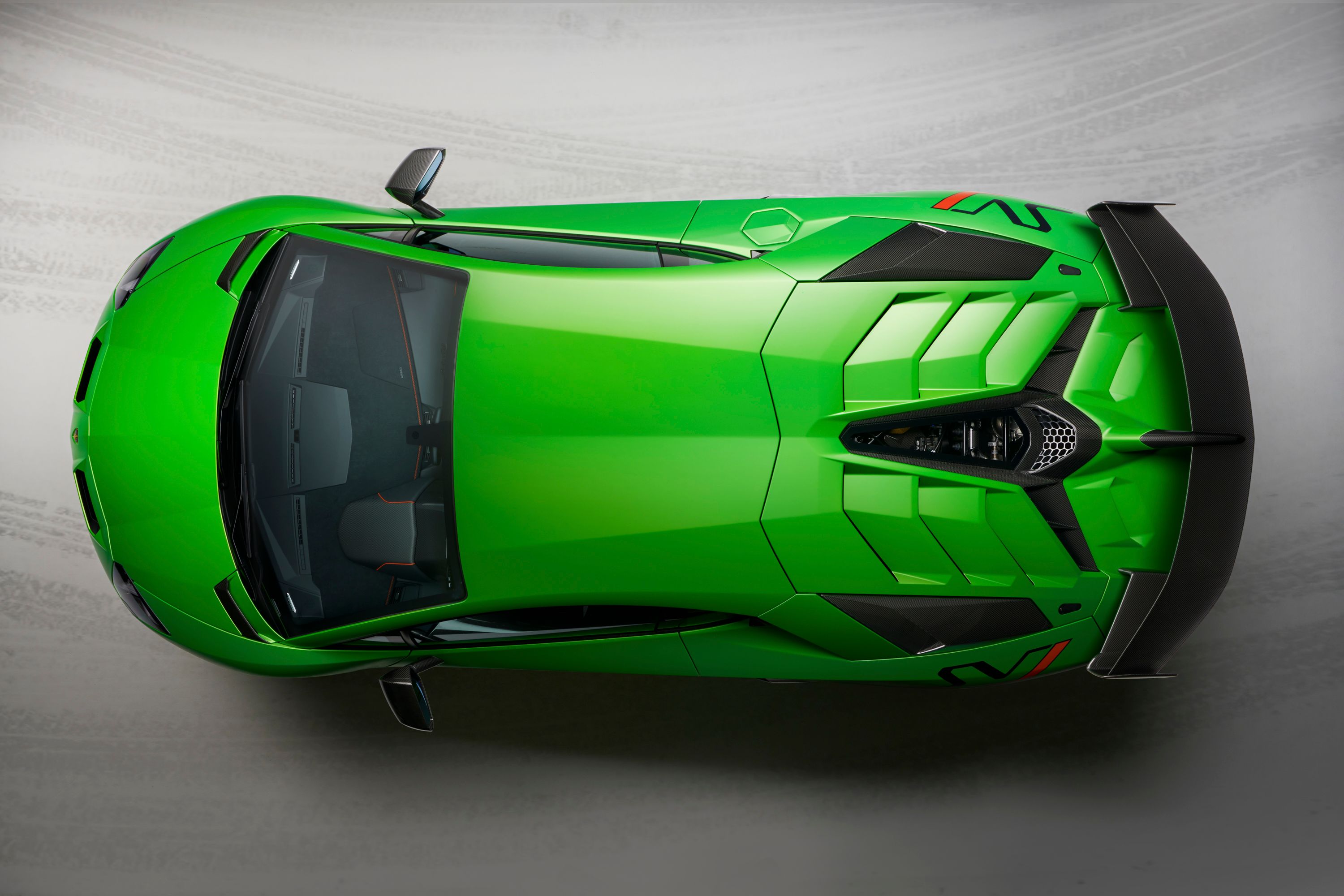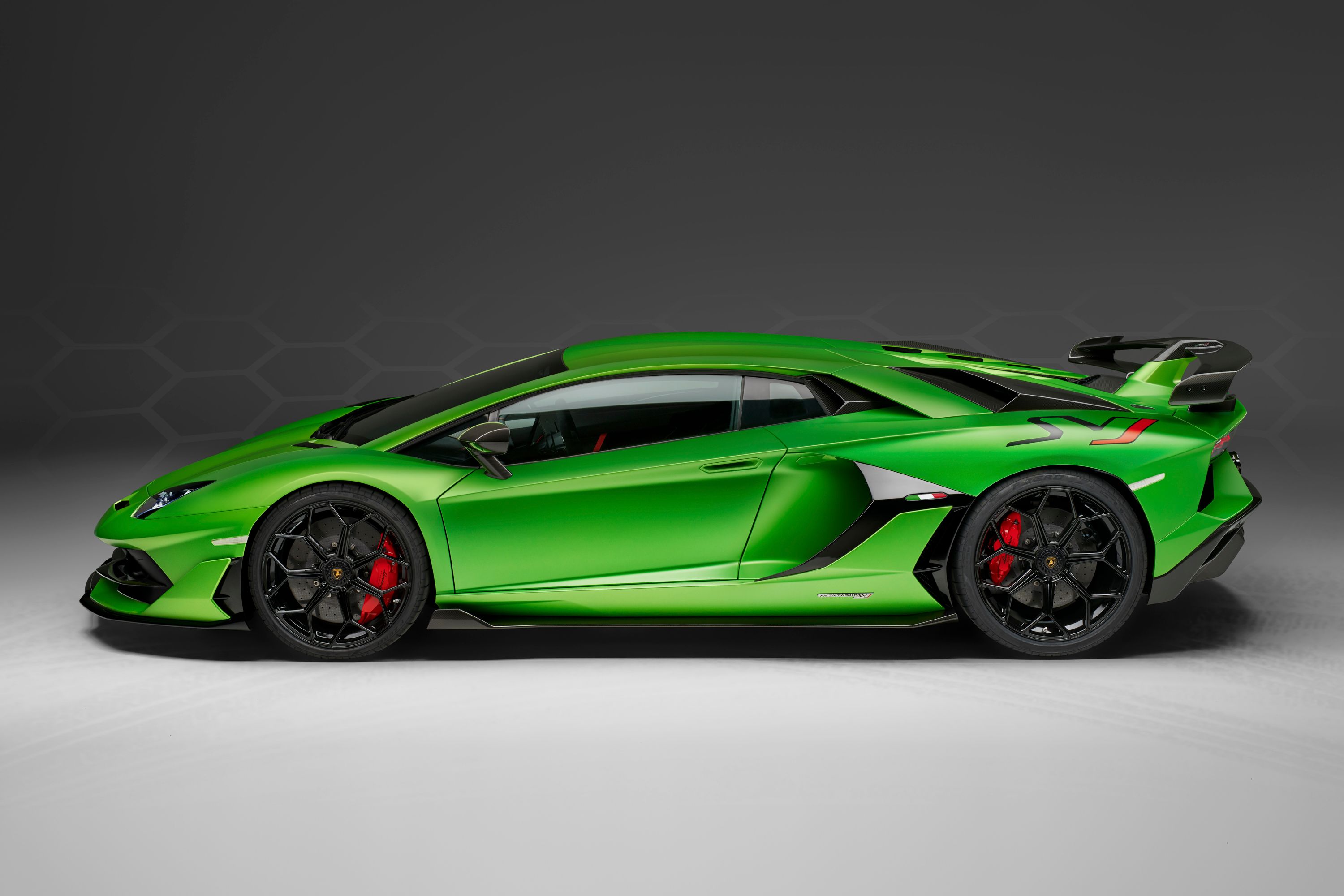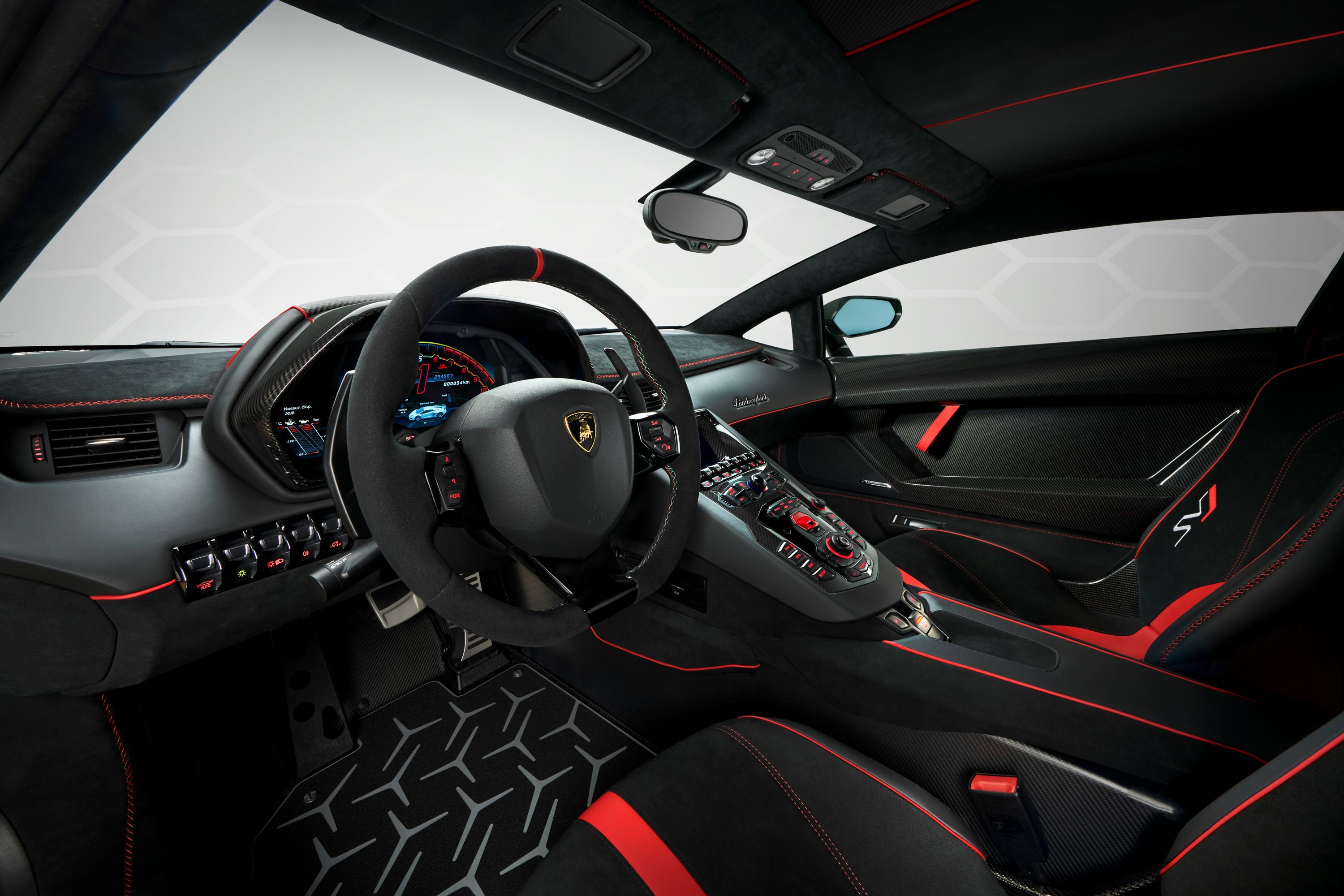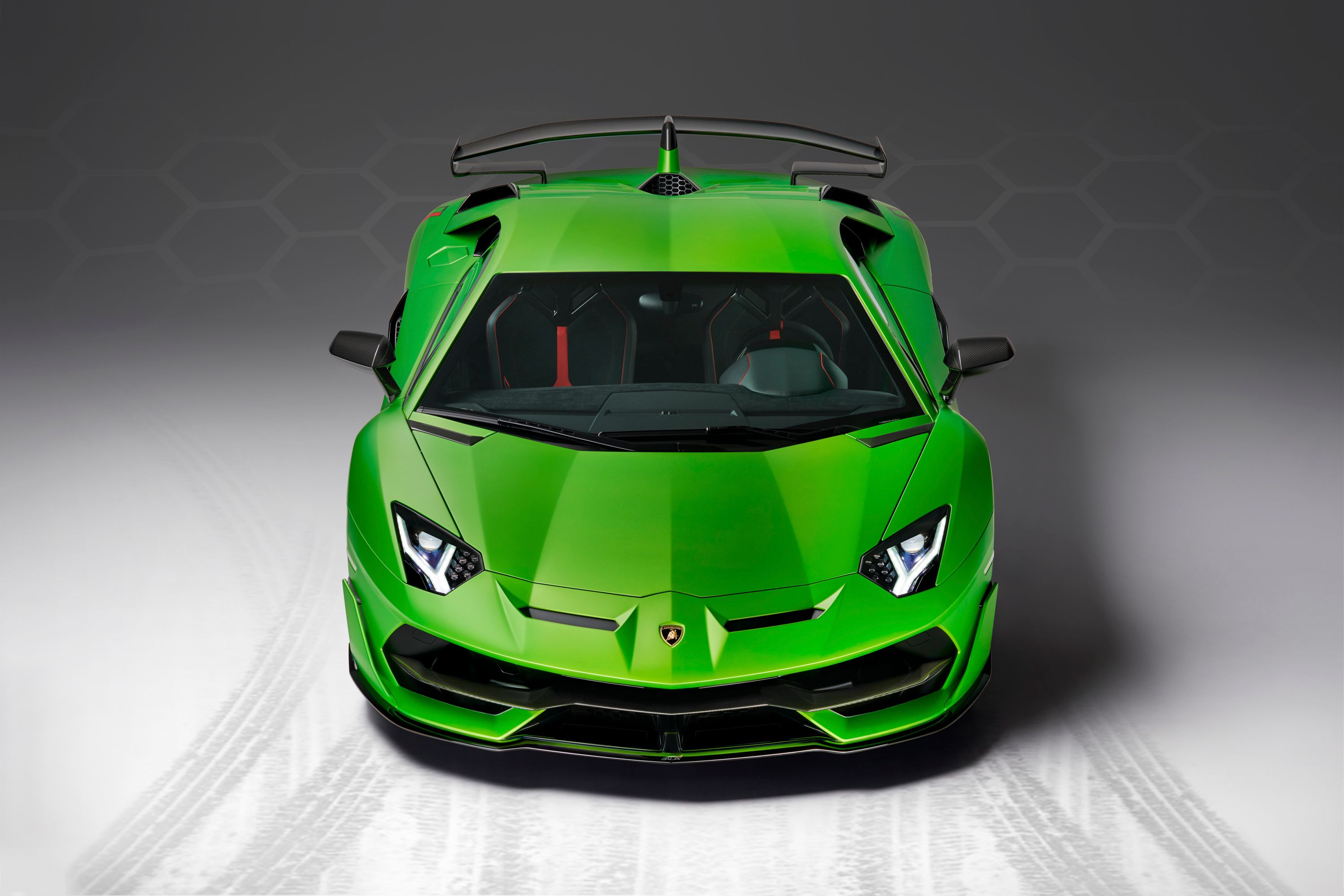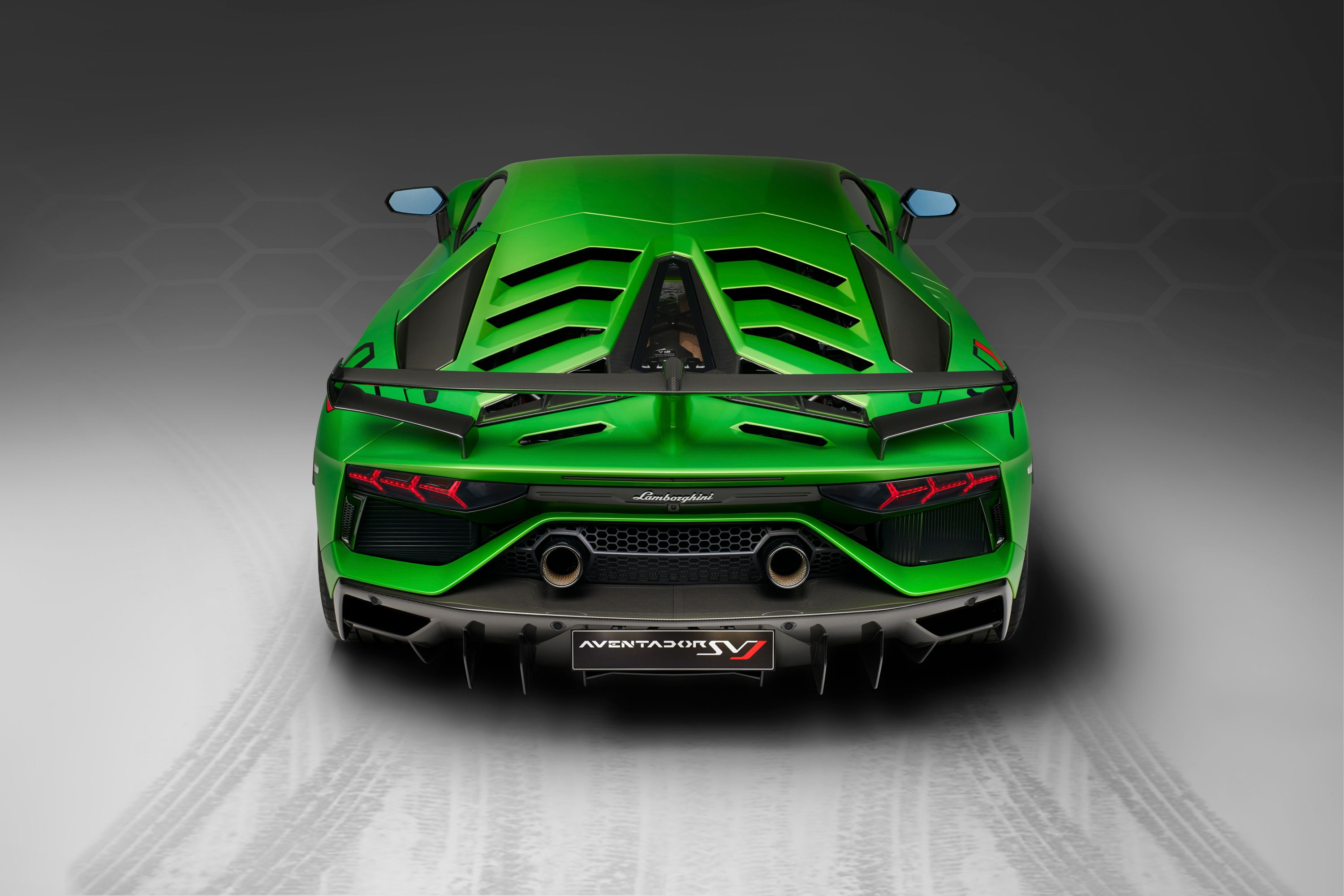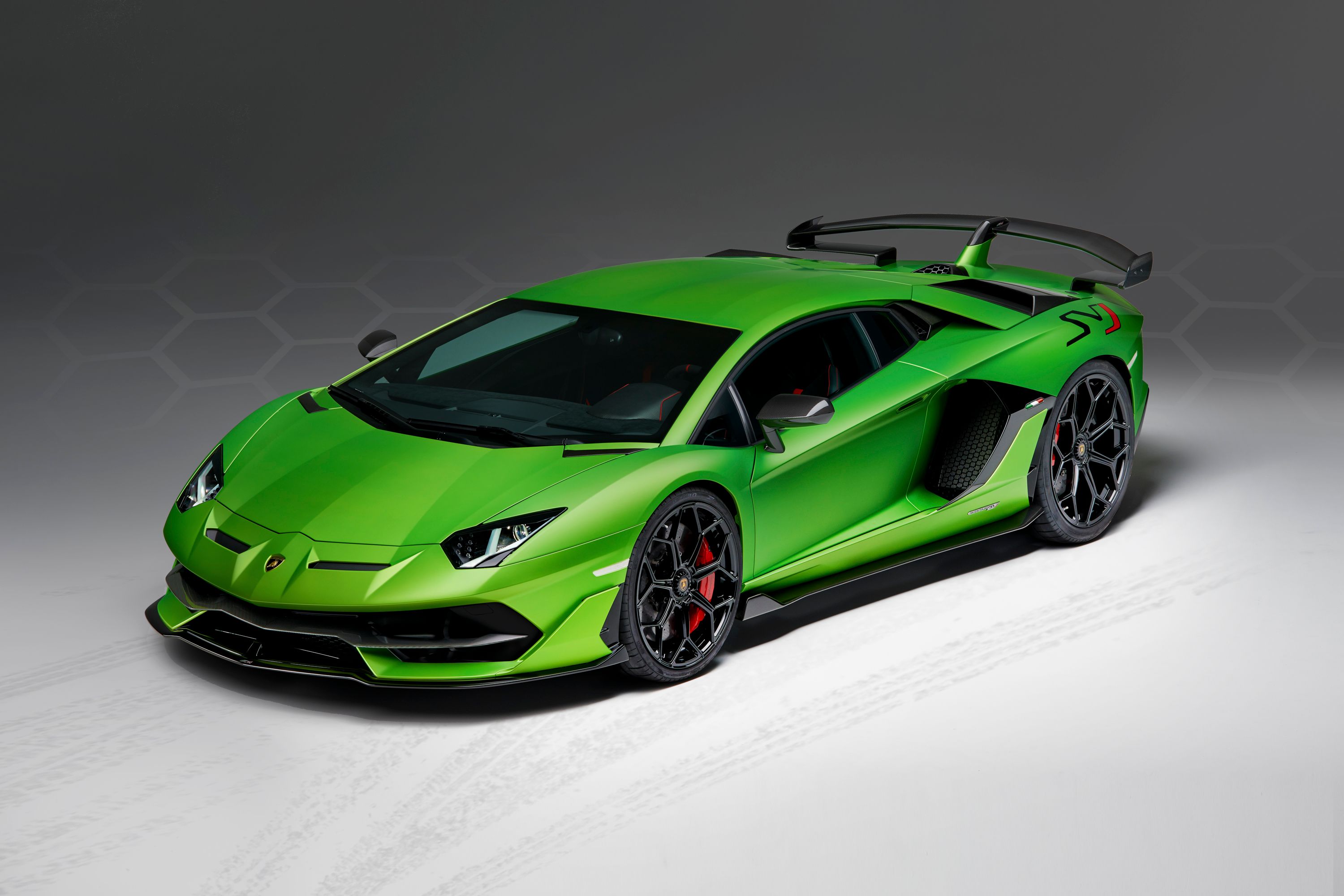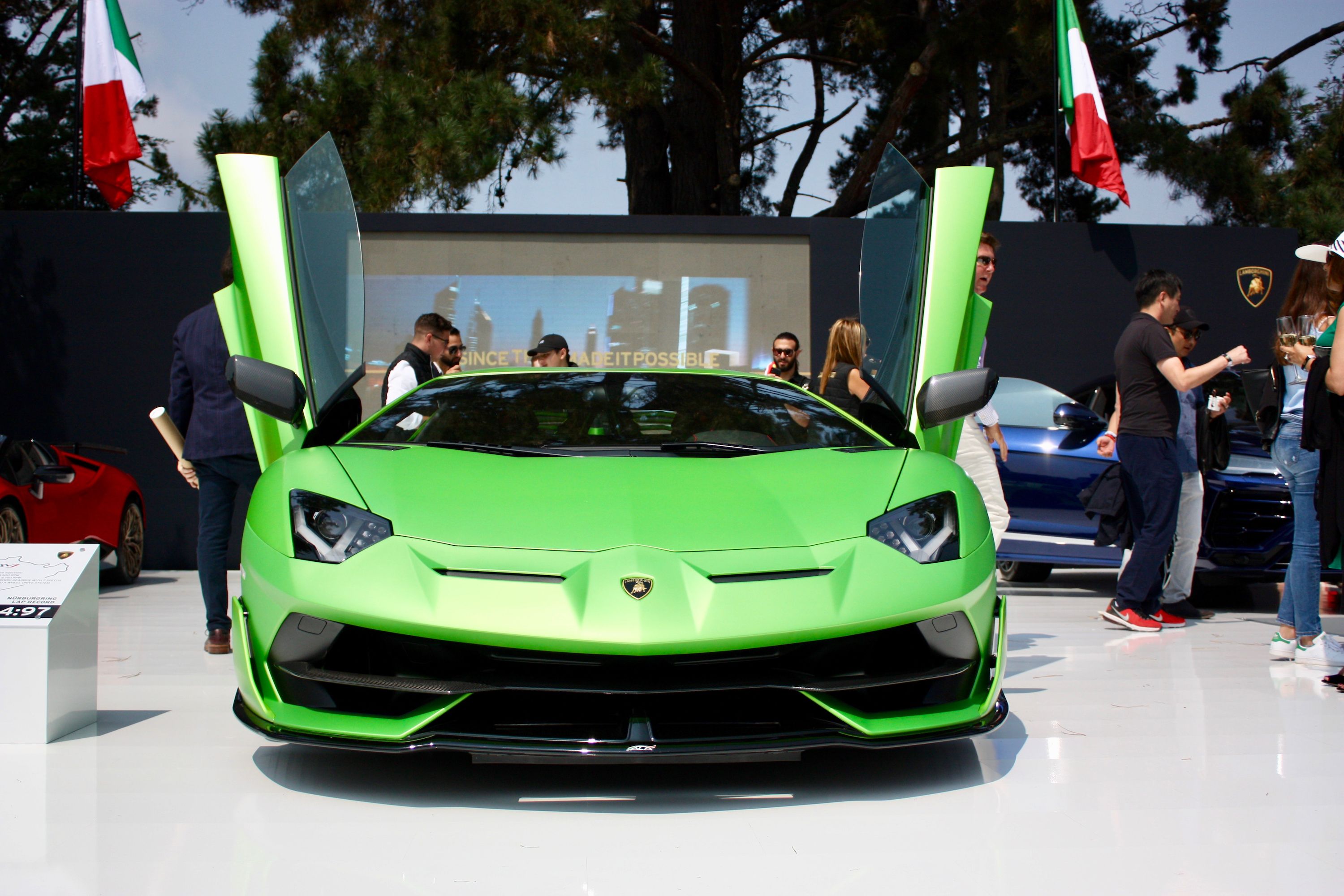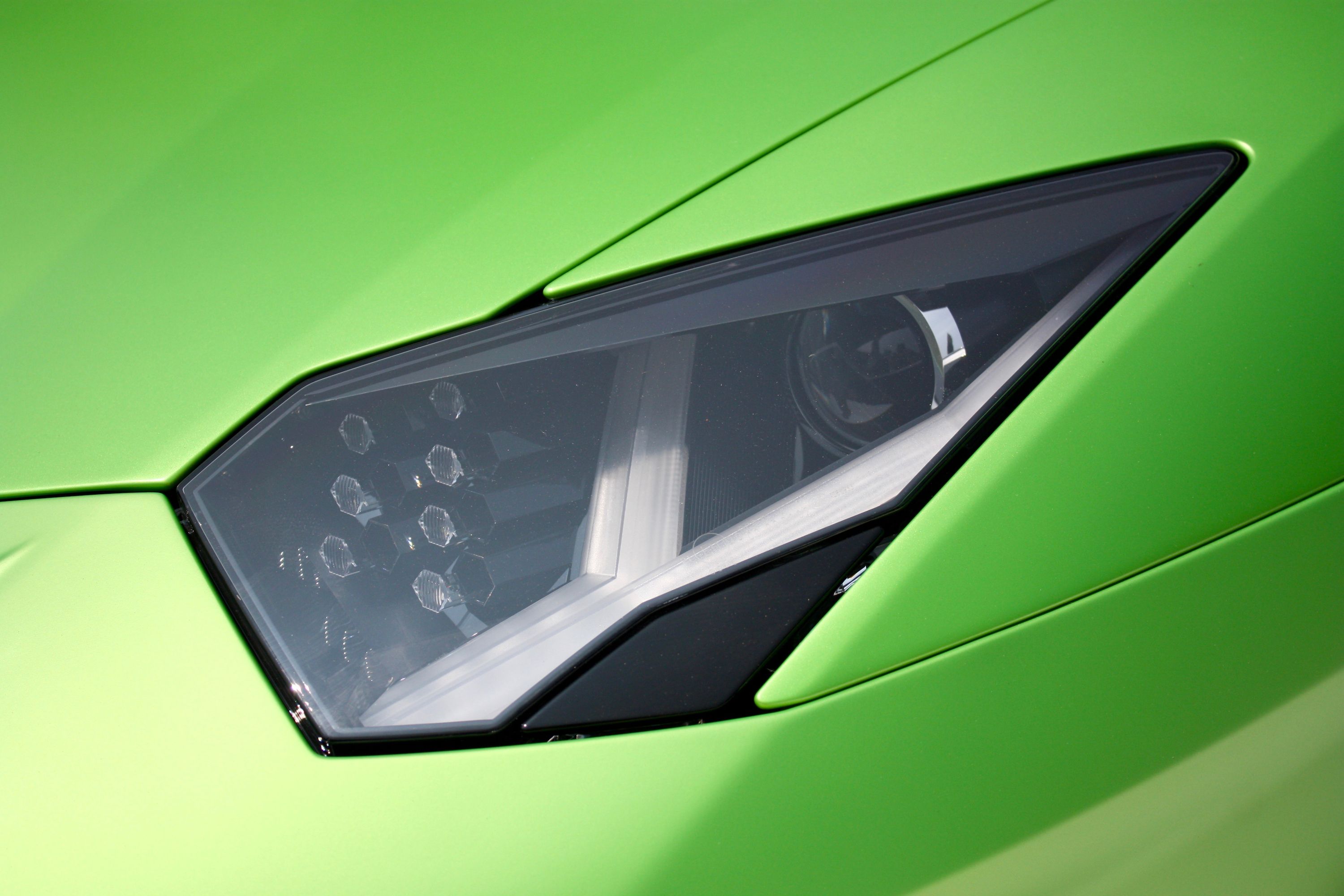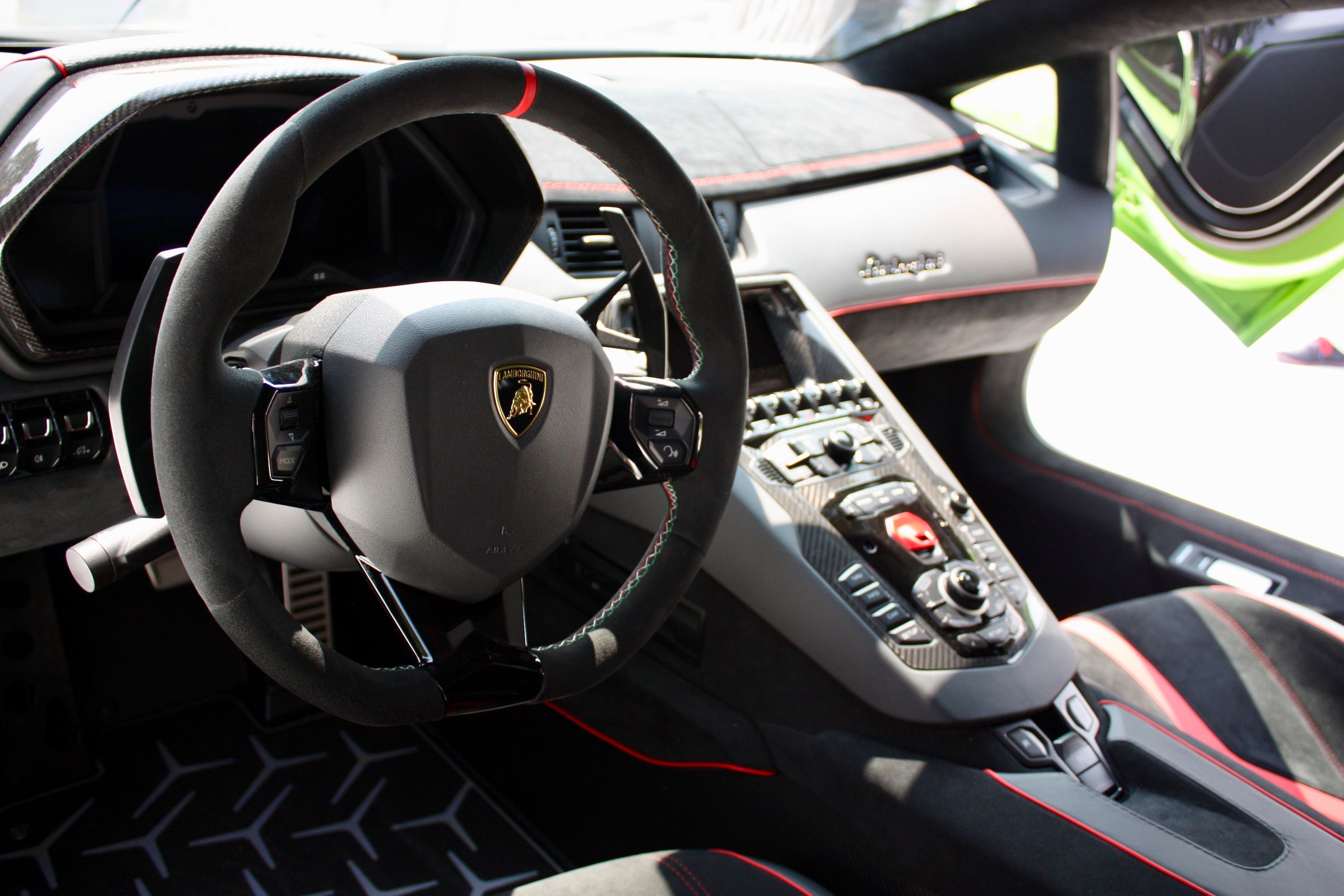The Lamborghini Aventador SVJ is the most powerful and aggressive version of the company's flagship supercar. The car that bears the iconic Jota suffix, which was first used on the Miura, made its debut at the Pebble Beach Concours d'Elegance as the fastest production car on the Nurburgring as of 2018.
The first Lambo to carry a "Jota" badge since the Diablo, the Aventador SVJ is essentially a beefed-up version of the SV. But it's not just faster and more powerful, it's also more aerodynamic, as it benefits from the Aerodynamica Lamborghini Attiva (ALA) system. First introduced on the Huracan Performante, ALA is a range of active aerodynamic features that turn the already potent supercar into a road-legal race car. Alongside the SVJ, Lambo launched a limited-edition SJV 63 model that pays homage to the company's founding year of 1963.
Continue reading to learn more about the Lamborghini Aventador SVJ.
2019 Lamborghini Aventador SVJ
- Make: Array
- Model: 2019 Lamborghini Aventador SVJ
- Engine/Motor: V12
- Horsepower: 770 @ 8500
- Torque: 531 @ 6750
- [do not use] Vehicle Model: Array
<
Lamborghini Aventador SVJ Exterior
Familiar but significantly more aggressive than its siblings, the SVJ looks like the Aventador SV and the Huracan Performante had a baby together. As seen on the Performante, the Aerodynamica Lamborghini Attiva (ALA) system changes the way the Avendator looks in a dramatic way. Up front, only the hood and the headlamps remained the same. Lambo redesigned the bumper from scratch by adding a huge amount of aero features. First up, the sharp nose is gone, as two vents were carved on each side of the "Lamborghini' shield, just like on the Huracan.
Below, there's a multi-tier bumper with two distinct horizontal blades, big side fins, and a "floating splitter. The SV's big intakes on the sides are gone, but needless to say, the SVJ looks much more aggressive in this configuration. All these features improve aerodynamics and cooling while reducing drag at all speeds.
The profile is equally aggressive now, sporting a new rocker panel shaped like the letter Y and bigger side vents that channel more air into the engine. The side skirts are also more aggressive, while the Y-spoke wheels have been crafted from aluminum specifically for this car. Naturally, they're lighter than usual.
The rear fascia isn't such a massive departure from the SV, but there are plenty of changes to talk about. Arguably the most important upgrade is the wing. Made from carbon fiber, it boasts a big central fin and redesigned posts with integrated blades on the sides. The wing is set on a new engine hood that's also made from carbon and features quick-release clips as seen on race cars. The Y-shaped openings show the V-12 engine underneath.
Just like on the Huracan Performante, the exhaust pipes were moved into the center fascia. This layout not only makes the car look more aggressive, but it also saves weight due to the shorter exhaust path. The diffuser doesn't appear to have bigger fins than the SV, but it now stretches the entire width of the fascia and includes new vents onto the sides. This configuration increases downforce.
But beyond all these new features you can spot front and rear, the Aventador SVJ employs a range of aero devices hidden under the shell. Lambo also redesigned the underbody, which sports vortex generators that work in conjunction with the front and rear diffusers to improve downforce by 30 percent. They also reduce turbulence thanks to the airfoil and side winglets.
All these features are part of the ALA system that actively varies aero load to achieve high downforce or low drag, depending on the driving style and road conditions. Electronically-actuated motors open or close active flaps in the front splitter and on the engine hood in less than 500 milliseconds. When these flaps are opened, the air pressure on the front spoiler decreases and air flow is directed through the vortex generators on the underside of the car.
This reduces drag and optimizes conditions for maximum acceleration and higher top speed. At the same time, the flaps on the engine hood open in order to stall the wing for improved drag in high-speed conditions. When ALA is turned off, the rear flaps are also closed, allowing the rear wing to act as a traditional fixed wing to enhance stability for high-speed cornering and full braking.
In all, ALA improves downforce on both axles by more than 40 percent compared to the Aventador SV. The car's drag coefficient also drops, making it the most aerodynamic iteration of the supercar. Needless to say, Lamborghini will have to make a massive effort to further improve this design.
Lamborghini Aventador SVJ Exterior Dimensions
|
Wheelbase |
106.30 inches |
|
Length |
194.61 inches |
|
Width |
82.6 inches |
|
Height |
44.72 inches |
|
Track front/rear |
67.71/66.14 inches |
|
Dry weight |
3,362 LBs |
|
Total weight distribution front/rear |
43%/57% |
Lamborghini Aventador SVJ Interior
While the exterior is significantly different than the SV, the interior of the SVJ is identical to the car it's based on. This isn't necessarily an issue as the SV has plenty of cool, race-inspired features, but don't expect anything extra unless you ask for assistance from Lambo's Ad Personam customization program.
But despite the lack of extra features, the SVJ looks incredibly good inside the cabin. There's high-quality Alcantara on the dashboard and the seats, fine leather, and a carbon-fiber hood for the instrument cluster. The door panels are made from carbon-fiber too and feature pull loops instead of handles for weight-saving purposes. The already iconic "Y" pattern is visible on the floor mats. The center console is also wrapped in Alcantara, while almost all important cabin elements have contrasting stitching, pipping, and inserts.
The "SVJ" logos on the seats provides the only hint that this interior was made for a limited-edition supercar.
Tech-wise, you can find all the Lambo-specific goodies, starting with four driving modes: Strada, Sport, Corsa, and EGO. The latter allows you to further customize how the car drives and reacts on the road or the race track. The colorful graphics of the instrument cluster provide you with all the important data, including a live status of the ALA functions.
The navigation and the infotainment systems aren't included as standard, but you can add them at no extra cost. The latter includes Apple CarPlay, voice-activated features, and the latest entertainment apps.
Weirdly enough, the telemetry system isn't standard either. While I can understand the missing navigation and infotainment, the track-prepped SVJ should definitely include the telemetry package as standard. After all, this car was designed to break records at the track, and many customers will hit racing courses on a regular basis. What's more, besides letting you record lap times and track performance, it also provides trip data, so it's a good instrument to keep an eye on driving behavior, routes, and even fuel economy.
Lamborghini Aventador SVJ Drivetrain
Just like the SVJ versions of the Miura and the Diablo, the Aventador SVJ hides a more powerful version of the nameplate's naturally aspirated V-12 under the hood. Upgraded with new internals, a titanium intake valve, and modified intake cylinder head duct for higher flow, the 6.5-liter mill cranks out 770 PS and 720 Nm of torque, which converts to 759 horsepower and 531 pound-feet.
That's an extra 19 horsepower over the Aventador SV and a 69-horsepower increase over the standard supercar. This figure also makes the SVJ the most powerful V-12-powered Lambo built to date.
In addition to the extra oomph, Lambo also reduced the curb weight compared to the SV. The SVJ tips the scales at 3,362, a 538-pound decrease. On the other hand, the SVJ is only 110 pounds lighter than the base Aventador, mostly because the ALA system adds quite a few pounds. The supercar is equipped with a permanent all-wheel-drive system and rear-wheel steering.
Performance-wise, the SVJ isn't quicker or faster than the SV. The sprint to 62 mph remains unchanged at 2.8 seconds, while top speed is estimated at the same 217+ mph. This isn't surprising, as the ALA system and the slightly lighter curb weight don't do much to improve off-the-line acceleration. The benefits are visible on the race track, where the Aventador SVJ is notably quicker.
As you may already know, the SVJ set a new lap record for production cars on the Nurburgring. The Italian supercar lapped the German track in 6:44.97 minutes, a benchmark that surpasses the record set by the Porsche 911 GT2 RS in 2017 by almost two and half minutes. The SVJ is also seven seconds quicker than the Huracan Performante and a whopping 14 seconds quicker than the Aventador SV.
Lamborghini Aventador SVJ Drivetrain Specifications
|
Engine |
6.5-liter V-12 |
|
Horsepower |
770 HP @ 8,500 RPM |
|
Torque |
531 LB-FT @ 6,750 RPM |
|
Transmission |
7 speed ISR |
|
Top Speed |
217 mph |
|
0 to 100 km/h (0-62 mph) |
2.8 seconds |
|
0 to 200 km/h (0-124 mph) |
8.6 seconds |
|
0 to 300 km/h (0-186 mph) |
24.0 seconds |
Lamborghini Aventador SVJ Chassis and Suspension
The more powerful engine and radical aerodynamics forced Lamborghini to rework the entire suspension system. The revised underpinnings provide higher mechanical grip, while the anti-roll bar is 50 percent stiffer than the SV's. A higher damping force range, increased by 15 percent over the SV, and Lamborghini’s Magneto Rheological Suspension has been recalibrated to enhance body and wheel control for track performance.
First used in the Aventador SV, the company's rear-wheel steering system is further engineered to work in conjunction with the revised aero load. It keeps the car in check despite the extra power, providing stability at high speed and agility during cornering. Speaking of which, the steering system has also been redesigned to provide motorsport-inspired feedback and for improved precision.
More improvements can be found in the four-wheel-drive system, which has optimized torque split for maximum traction and agility. The system also sends a further three percent of torque to the rear axle compared to the SV. The ESC has been enhanced for improved cornering and driver experience in extreme handling conditions, and ABS has been specifically tuned for the improved grip provided by the Pirelli P Zero Corsa tires.
Although these are offered on other Lambos as well, they've been specifically developed for the Aventador SVJ and provide higher vertical stiffness. This is necessary in order to accommodate the car's higher downforce, which requires extra grip. Although these tires are suited for both road and track, Lambo offers a set of Pirelli P Zero Trofeo R tires for track use. The optional rubber is also street-legal though.
Lamborghini Aventador SVJ Prices
Pricing for the Aventador SVJ starts from $517,770 in the United States. Interestingly enough, the SVJ is only $24,000 more expensive than the SV model was for the 2016 model year. U.K. pricing starts from £291,667, while customers from mainland Europe will pay €349,116 before options.
Pricing for the SVJ 63 model, limited to only 63 examples, has yet to be announced, but it's safe to say that it costs a bit more and that it's already sold out. Extras for this version include "63" graphics on the body and visible carbon-fiber trim.
Lamborghini Aventador SVJ Competition
Ferrari 812 Superfast
2}Granted, the 812 Superfast isn't as track-focused at the Aventador Performante, but until Ferrari updates the F12tdf to 812 specifications, you'll have to settle for this car if you're hooked on Maranello-built vehicles. Launched as a mid-cycle upgrade for the F12berlinetta, the 812 Superfast was redesigned significantly on the outside, gaining a more aggressive stance and more modern features. The Superfast gets its juice from a new, 6.5-liter V-12 rated at 789 horsepower and 530 pound-feet of torque. That’s 59 extra horsepower compared to the F12berlinetta, to go with 20 additional pound-feet of twist. The 812 Superfast is also more potent than the limited-edition F12tdf, boasting an extra 20 horsepower and 11 pound-feet, which makes it the most powerful Ferrari in the company's history. Not surprisingly, the 812 Superfast is quicker than the F12berlinetta from 0 to 60 mph, needing 2.9 ticks to complete the benchmark. Pricing is not yet available, but it should fetch around $340,000 before options.
Learn more about the Ferrari 812 Superfast.
Porsche 911 GT2 RS
A rear-engined car, the 911 sports an almost completely different layout compared to the Aventador, but it's impressively quick. What's more, it held the Nurburgring record for ten months before the SVJ went to Germany to take it down. The coupe ran the Nordschleife in 6:47.25 minutes, two and a half minutes slower than the SVJ but almost five seconds quicker than the Huracan Performante. Heavily based on Porsche's race-spec 911s, the GT2 RS also features a comprehensive aerodynamic package that includes active systems, big vents, and a massive wing around back. While the Lambo gets its juice from a naturally aspirated engine, the GT2 RS charges thanks to a twin-turbo, 3.8-liter flat-six. Total output is rated at 700 horsepower and 553 pound-feet of torque. That's a bit less than the Aventador SVJ, but the GT2 RS is just as fast, needing 2.8 seconds to hit 62 mph. Its top speed is slightly lower though at 211 mph. The GT2 Rs is no longer available, but Porsche sold each car from $293,200. Equipped with the Weissach package, the supercar fetched $324,200.
Read our full story on the 2018 Porsche 911 GT2 RS.
Conclusion
The Jota is among the most iconic performance badges out there, but it's also engulfed in mystery, as the original car based on the Miura was destroyed and Lambo never got a good chance to brag about its credentials. Fortunately, Miura customers found out about it and pressured Lambo offer a Jota package for the existing production models.
Decades later, the name was revived during the Diablo era and it finally returned on a modern supercar. The cool thing about this badge is that Lambo isn't milking it to death, with just three cars having used it in 50+ years. That's the kind of exclusivity that will keep customers coming into dealerships and the car going up in value in just a few years.
On the performance front, the SVJ isn't a big step over the SV, but this car shines on the race track. And that's exactly what Lamborghini needed the Aventador to do as soon as the Huracan Performante was launched. Needless to say, the SVJ will probably remain the most potent Aventador ever as the nameplate is already seven years old as of 2018 and it's life-cycle is about to end.
Further reading
Read our full review on the 2018 Lamborghini Aventador S.
Read our full review on the 2015 Lamborghini Aventador Super Veloce.
Read more Lamborghini news.
Read more Pebble Beach Concours d'Elegance news.
Update History
Updated 10/04/2017: Our spy photographers caught the upcoming Lamborghini Aventador Performante out for a new testing session, and this time it reveals its both coupe and roadster versions.



